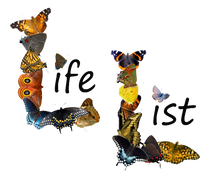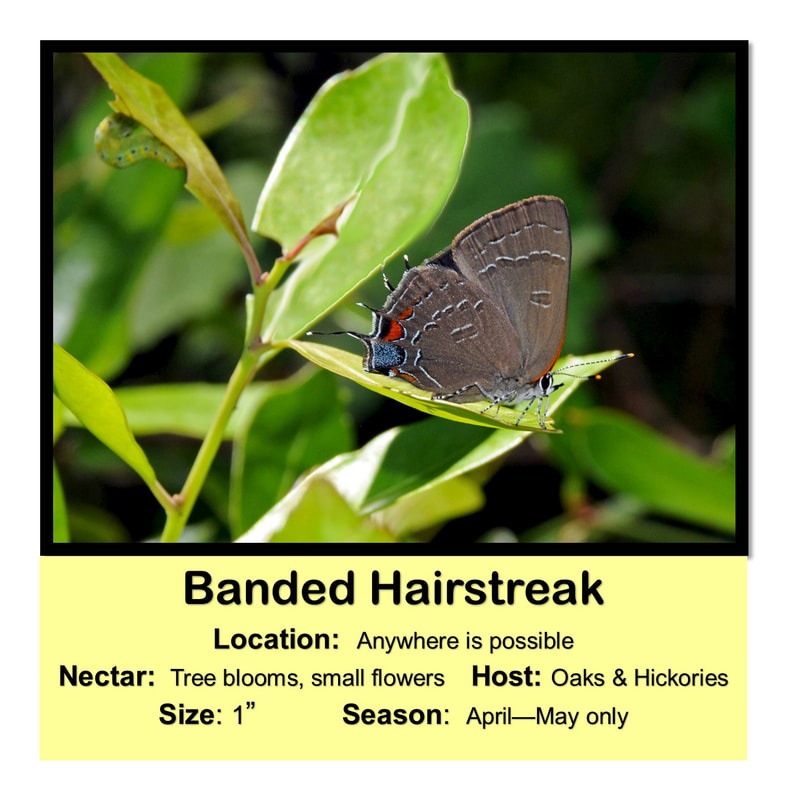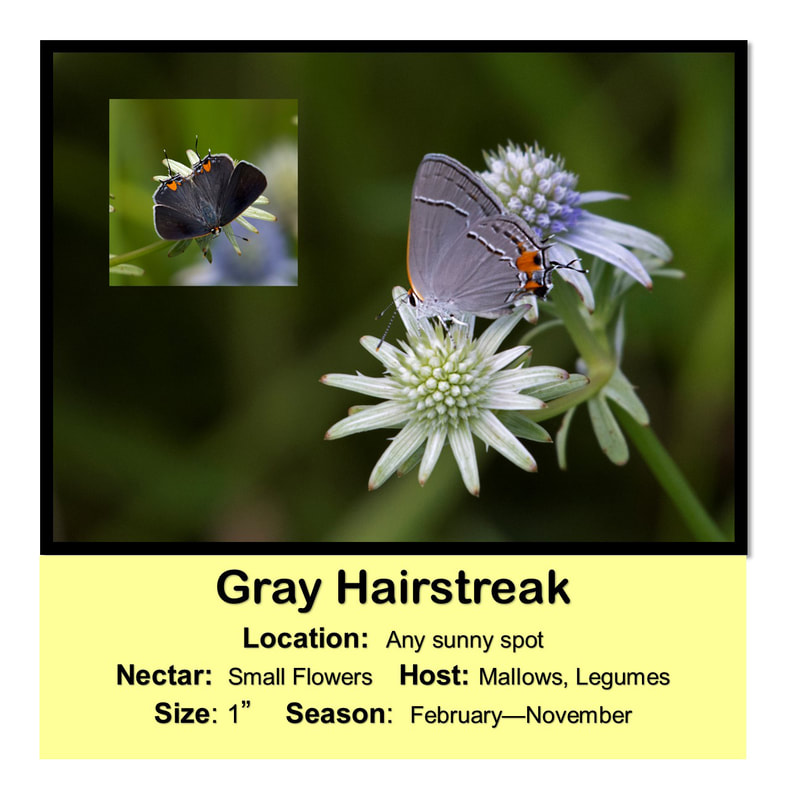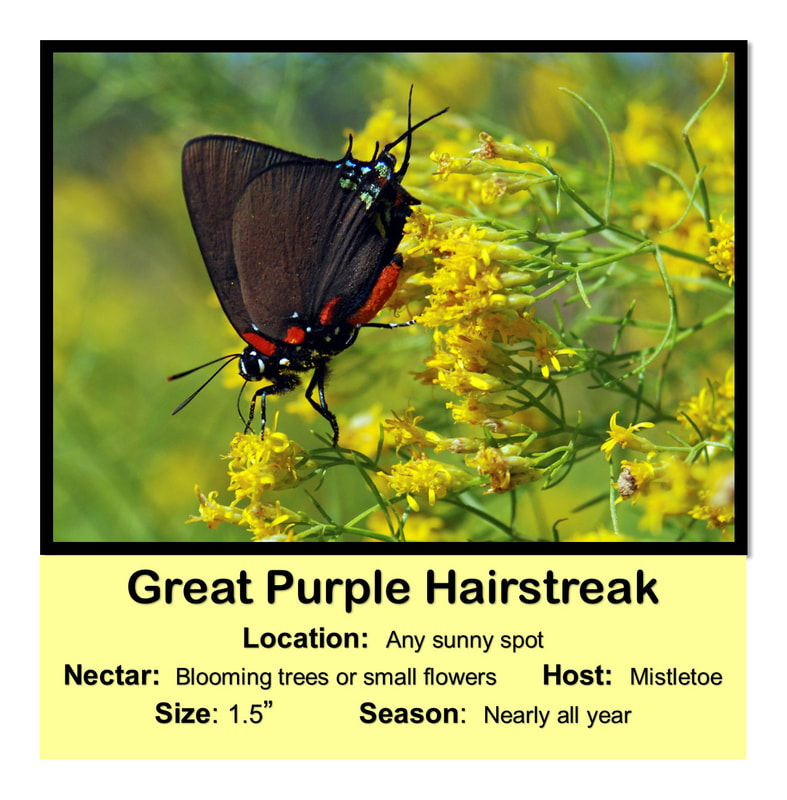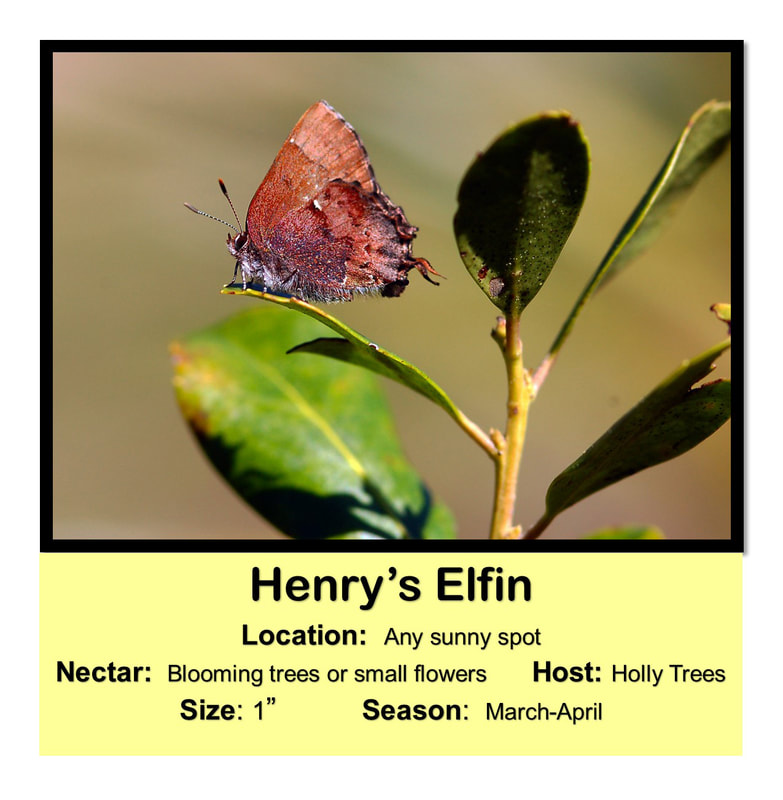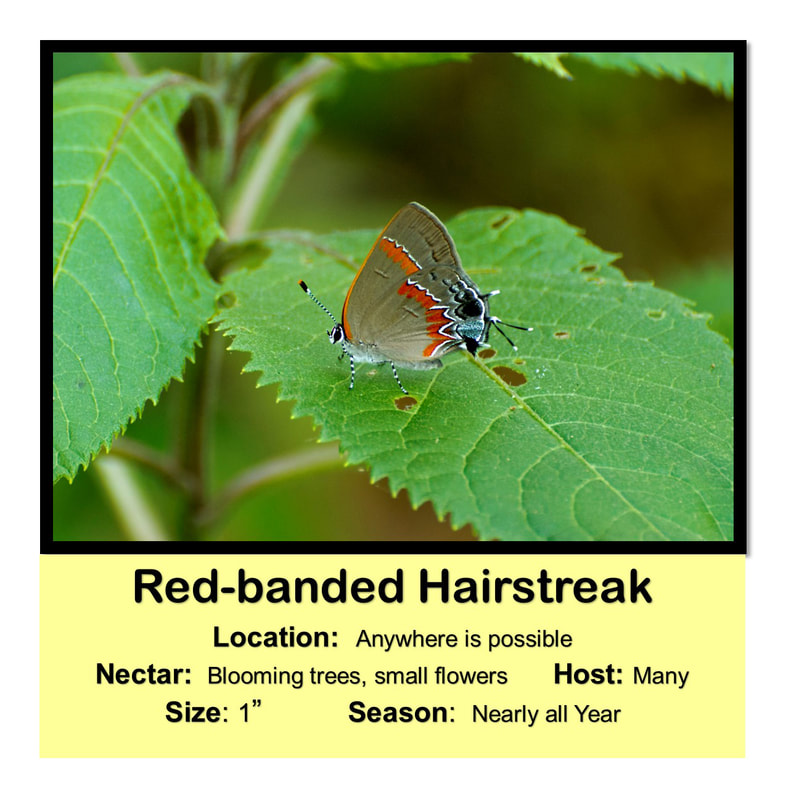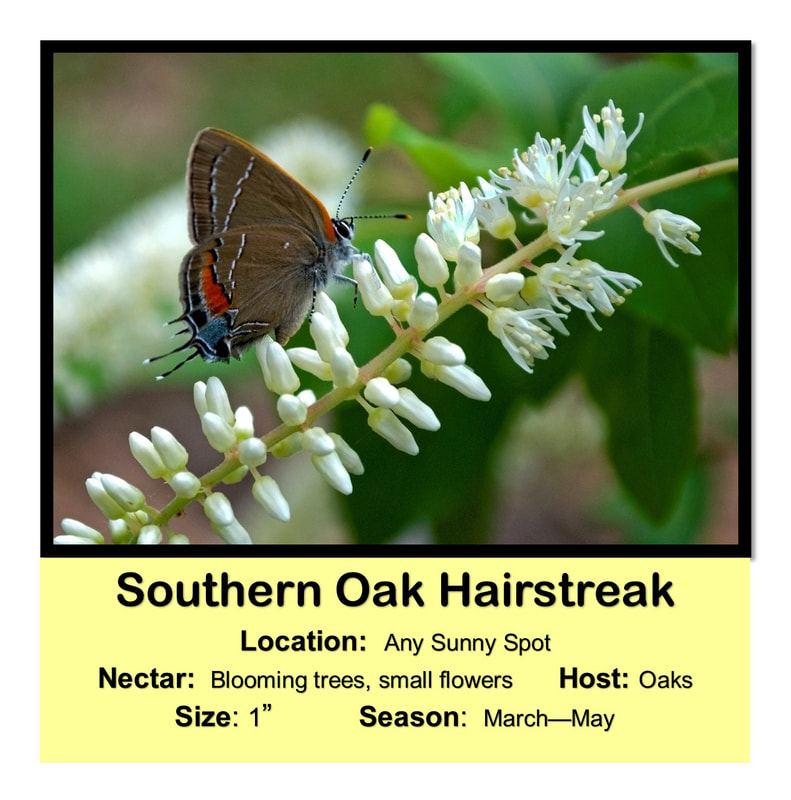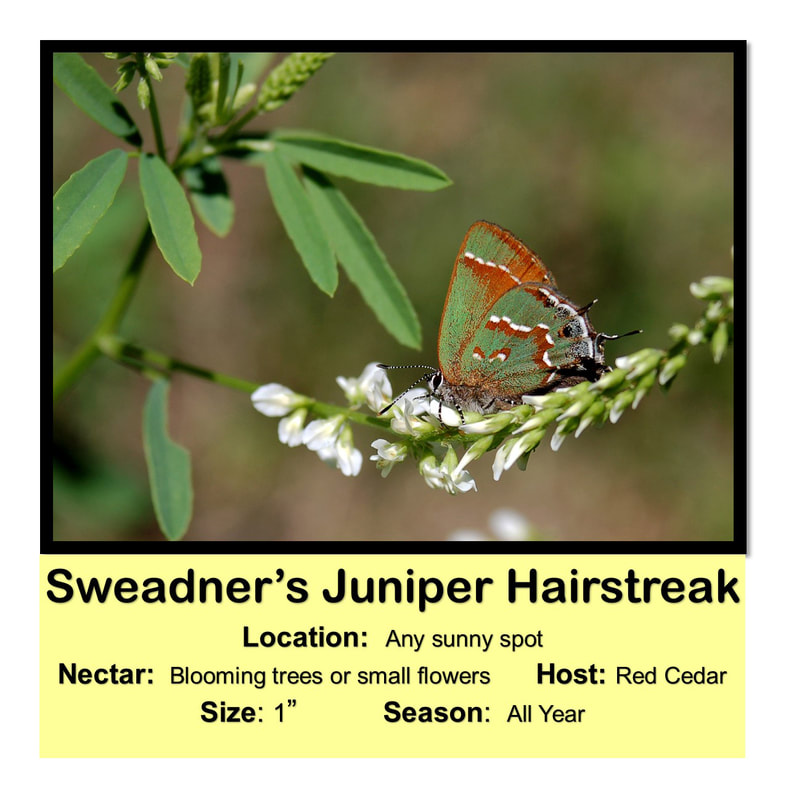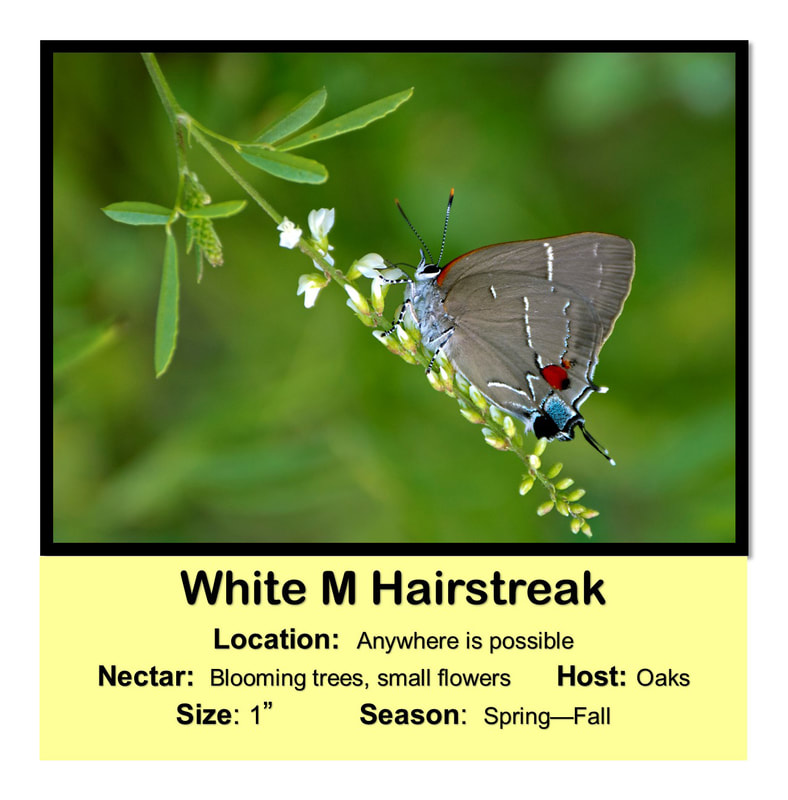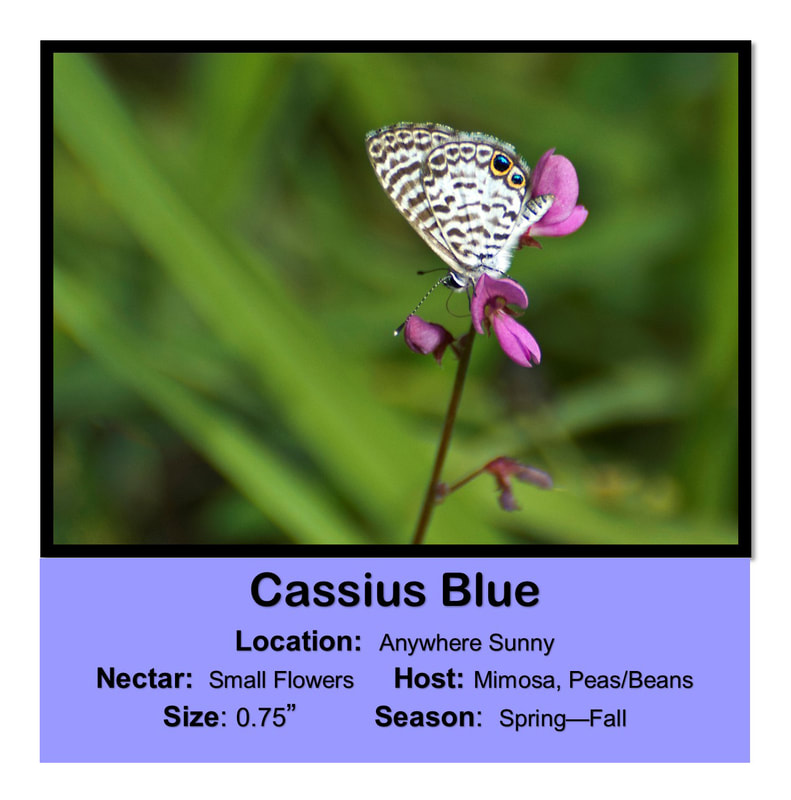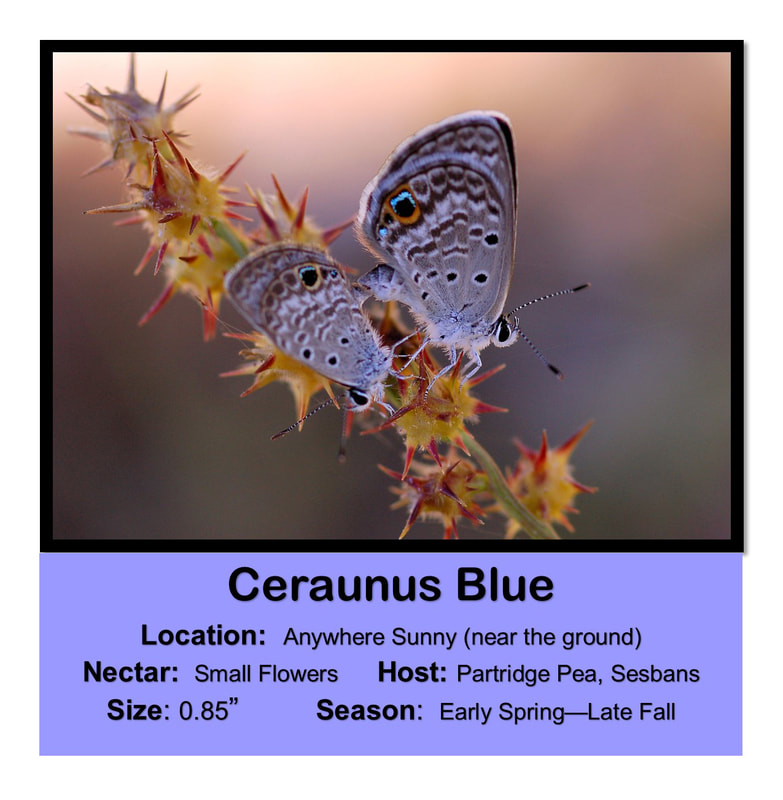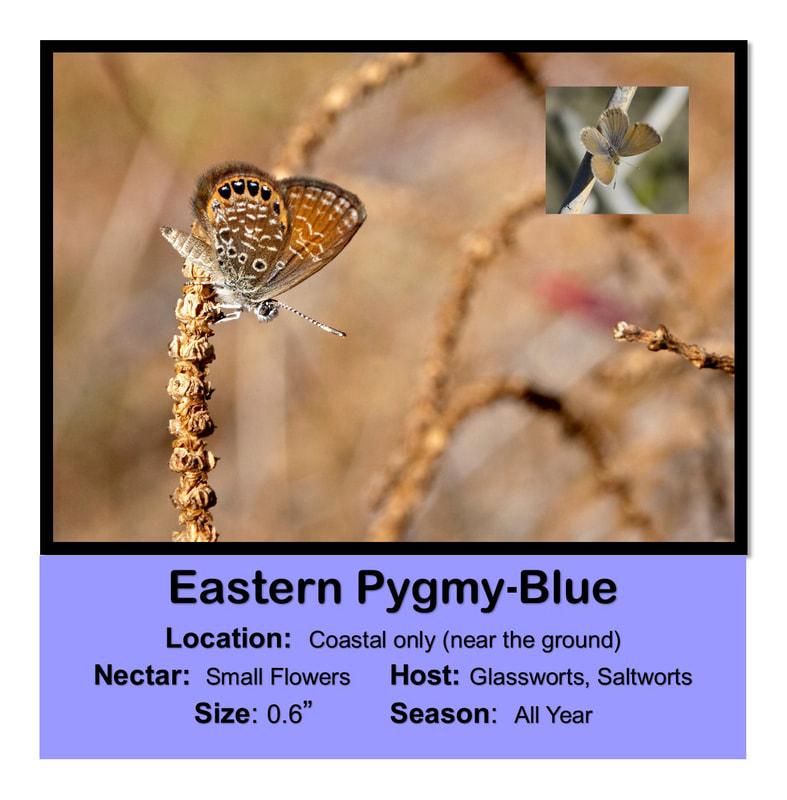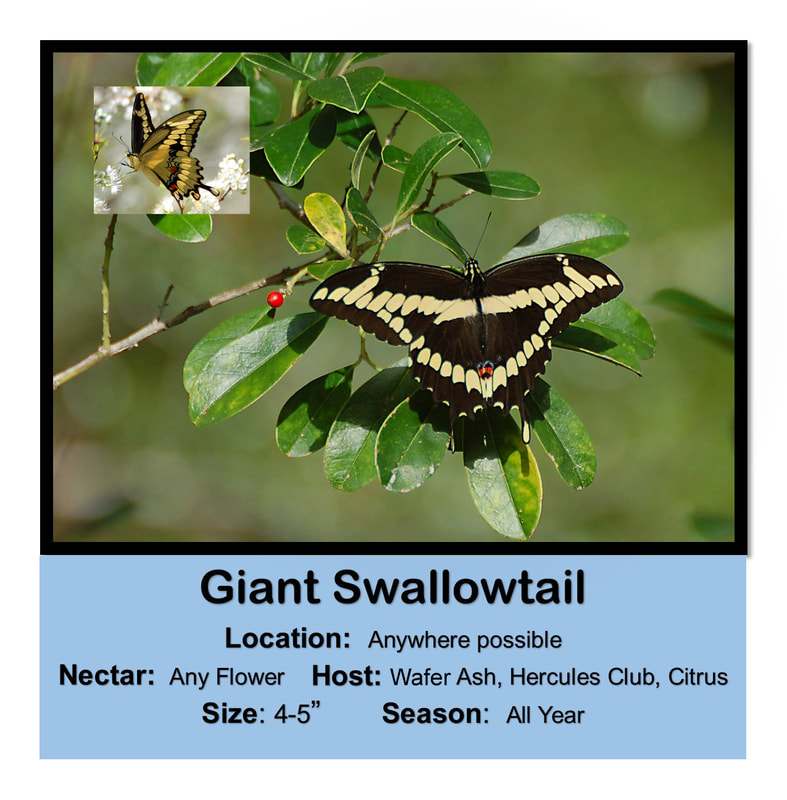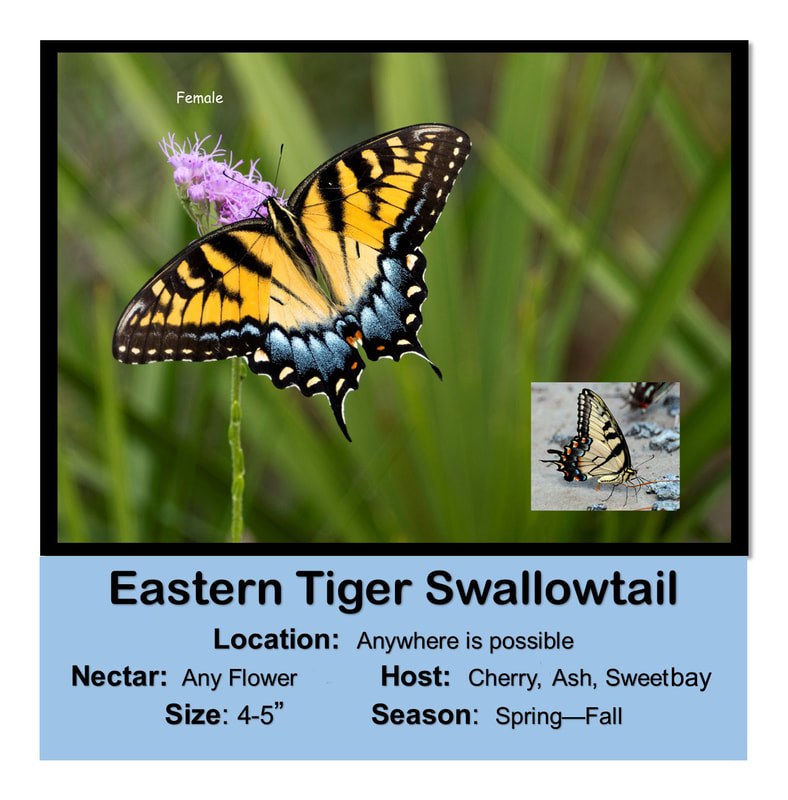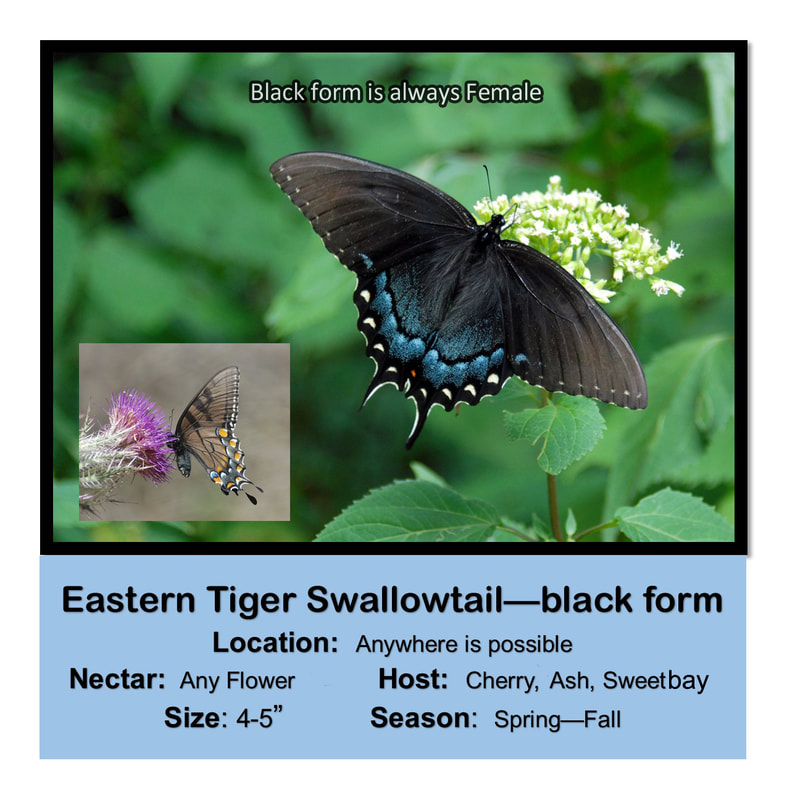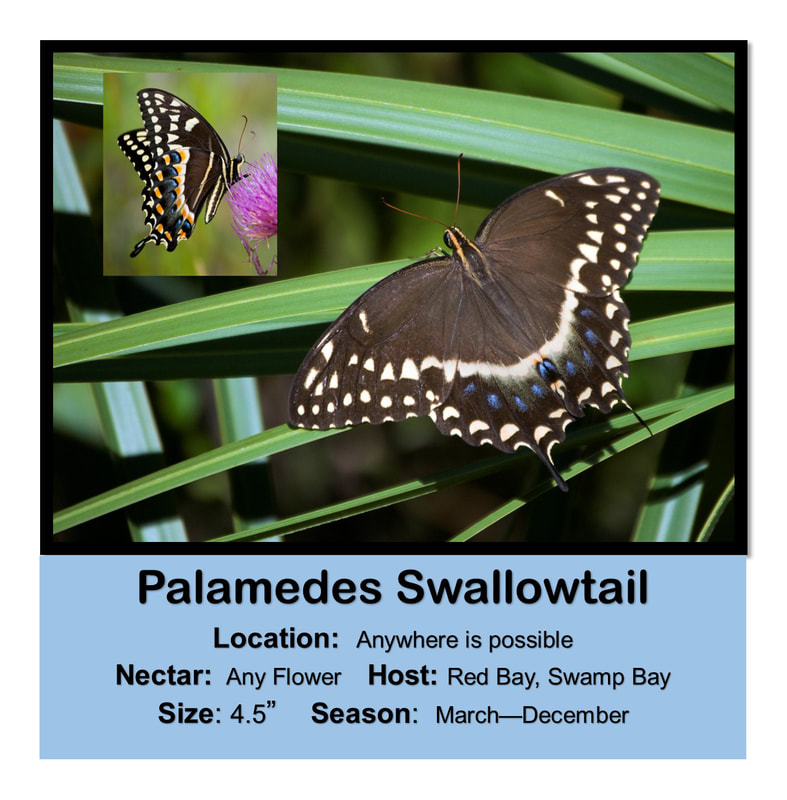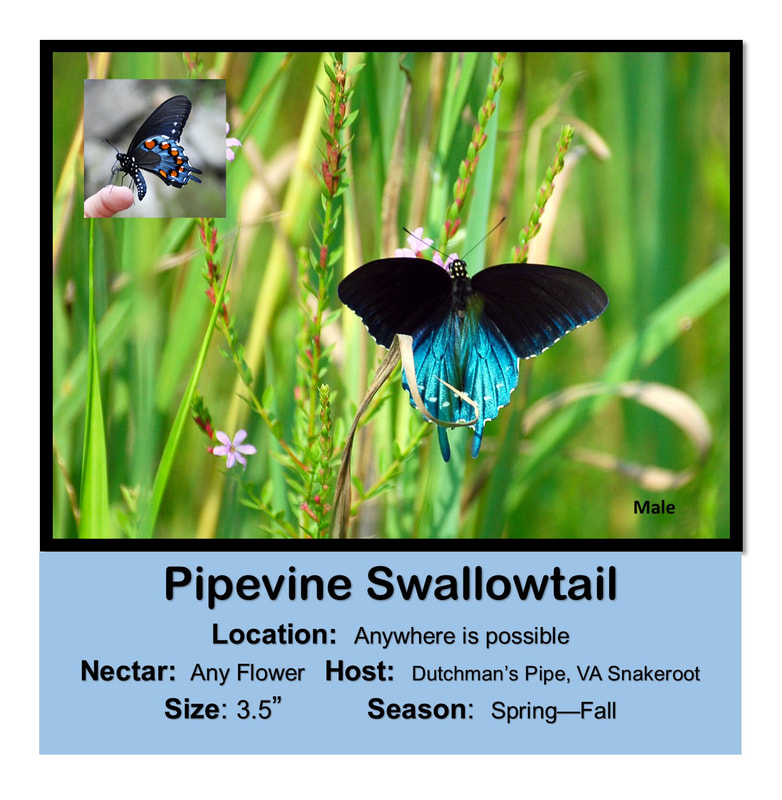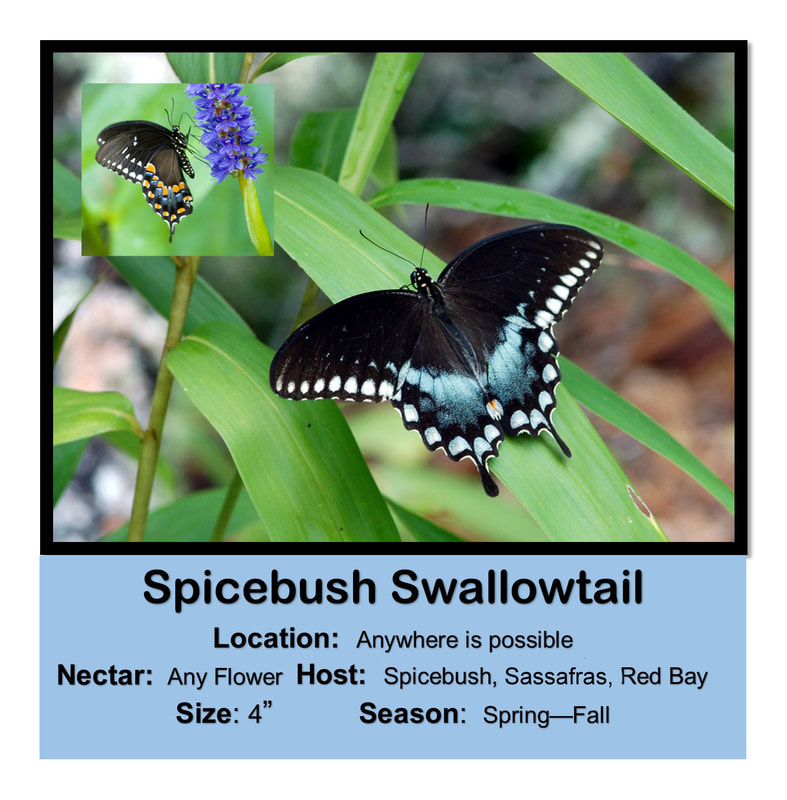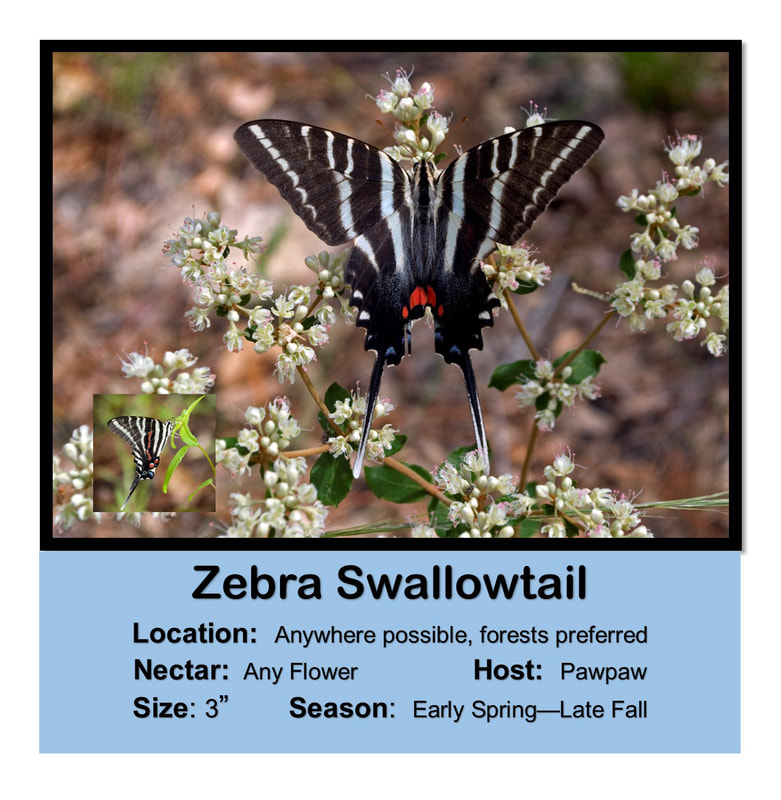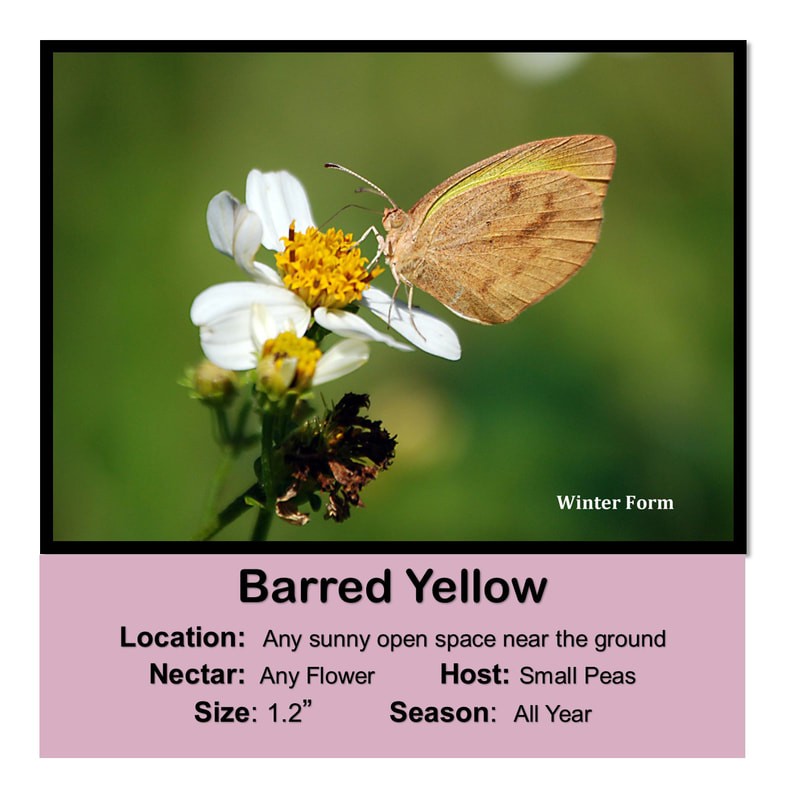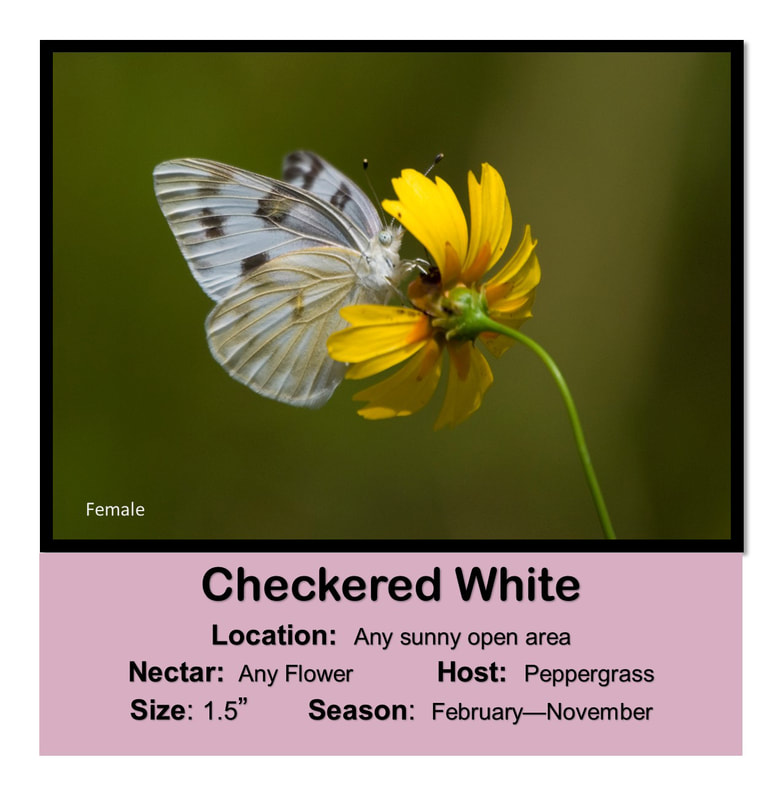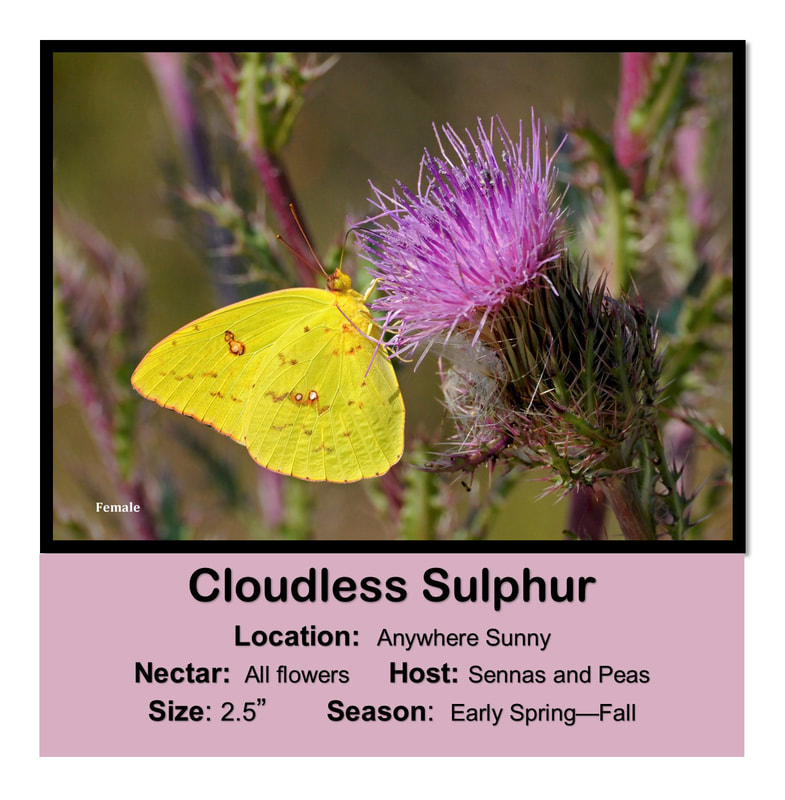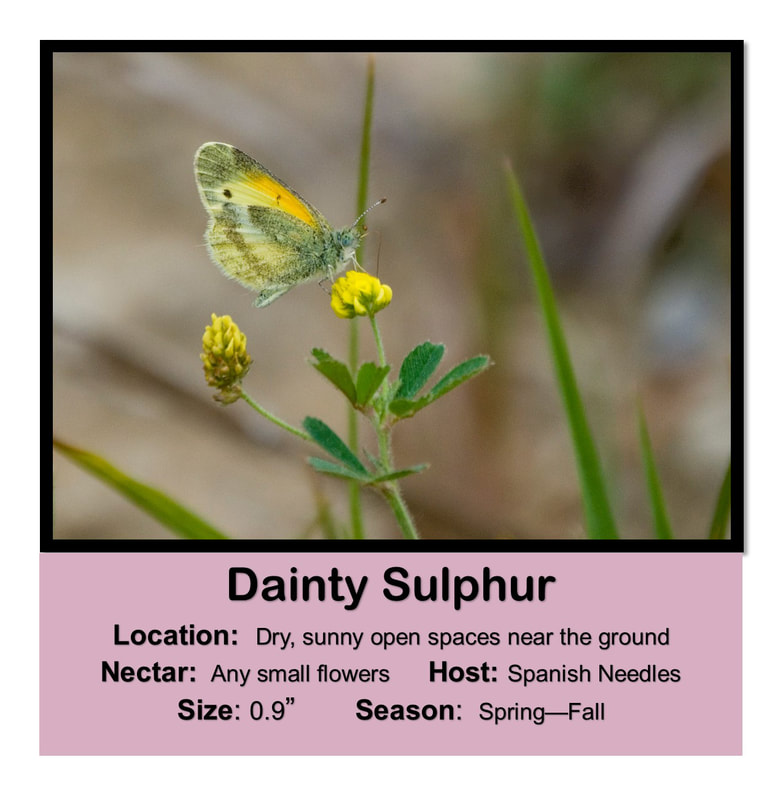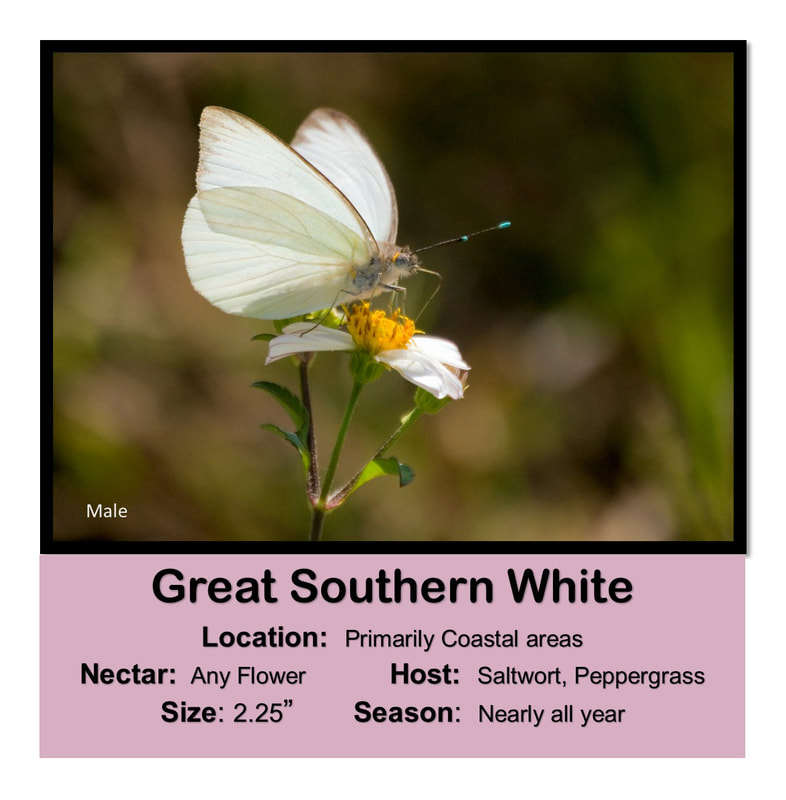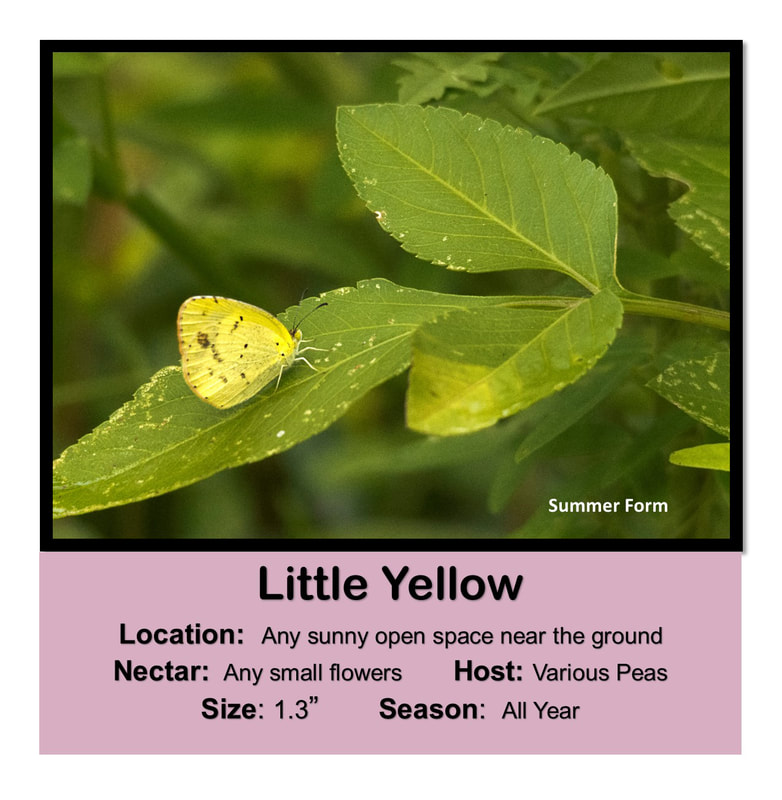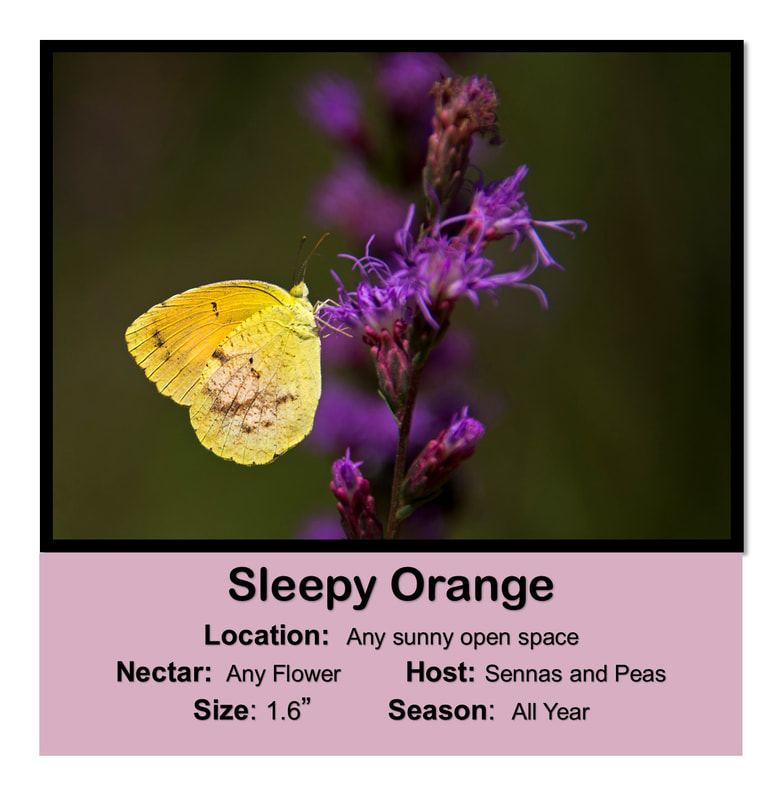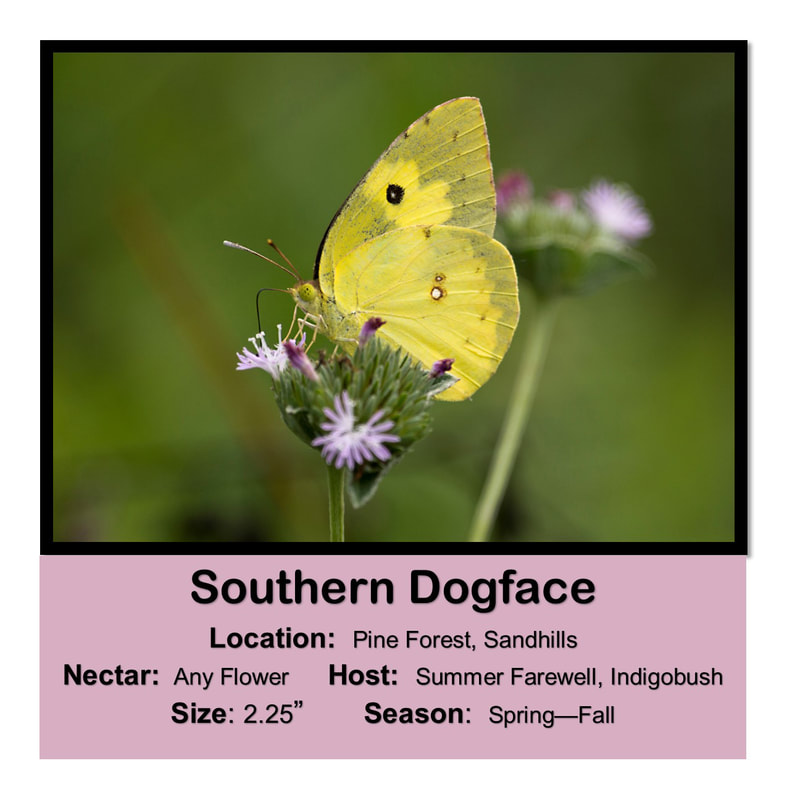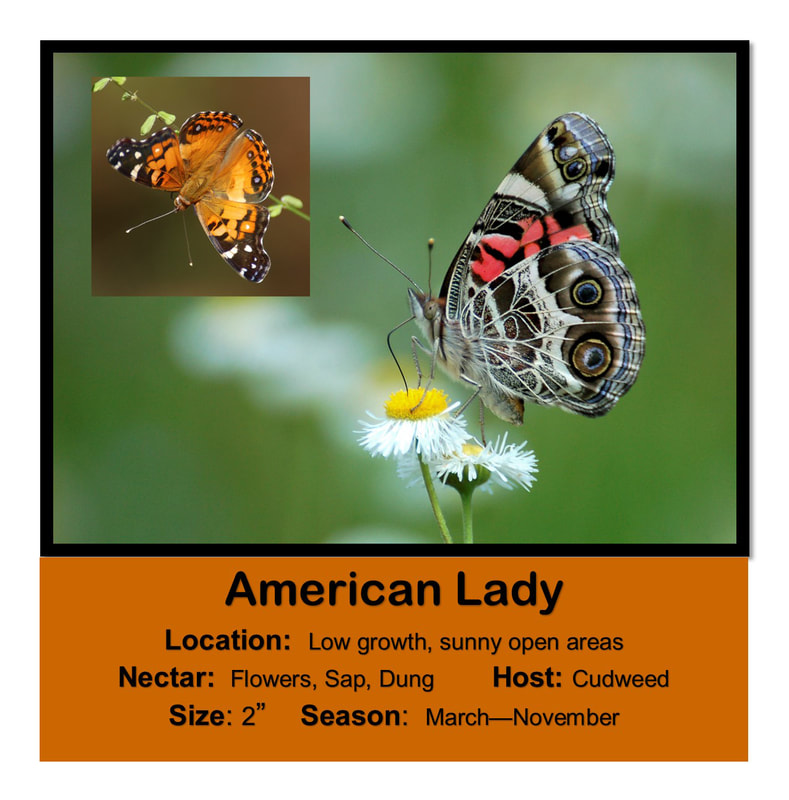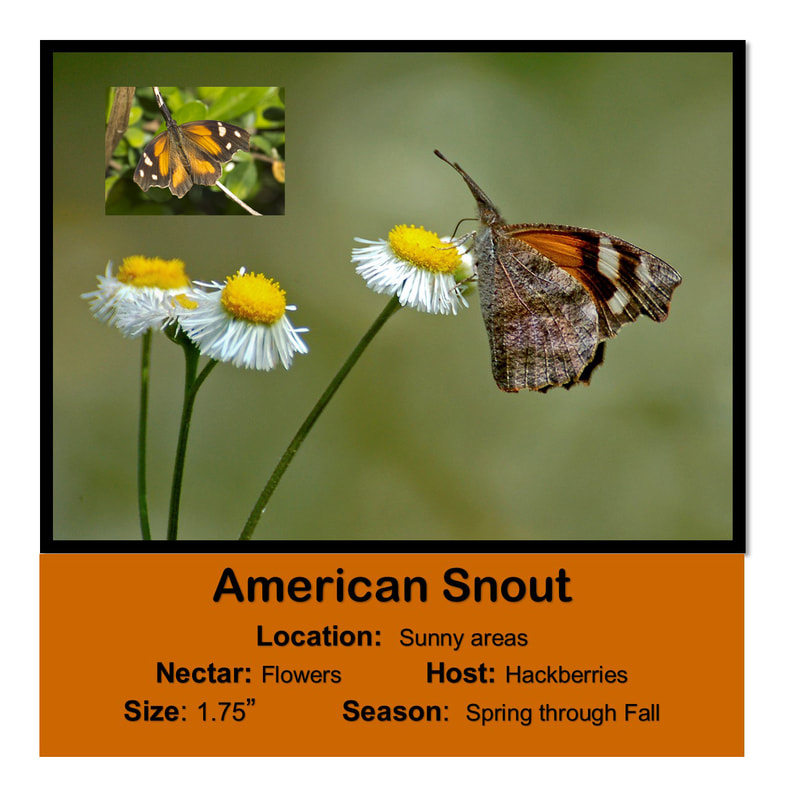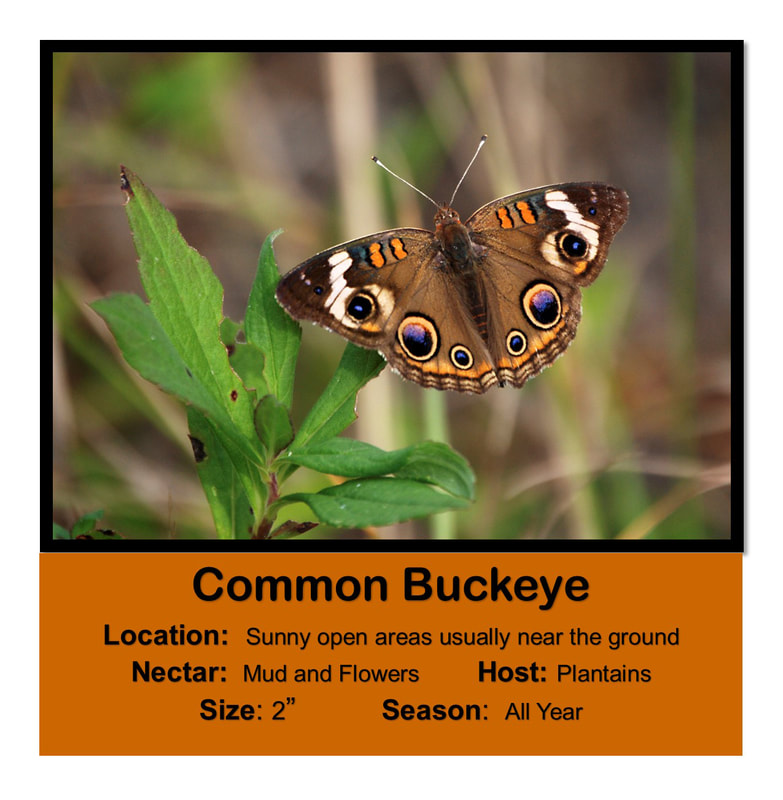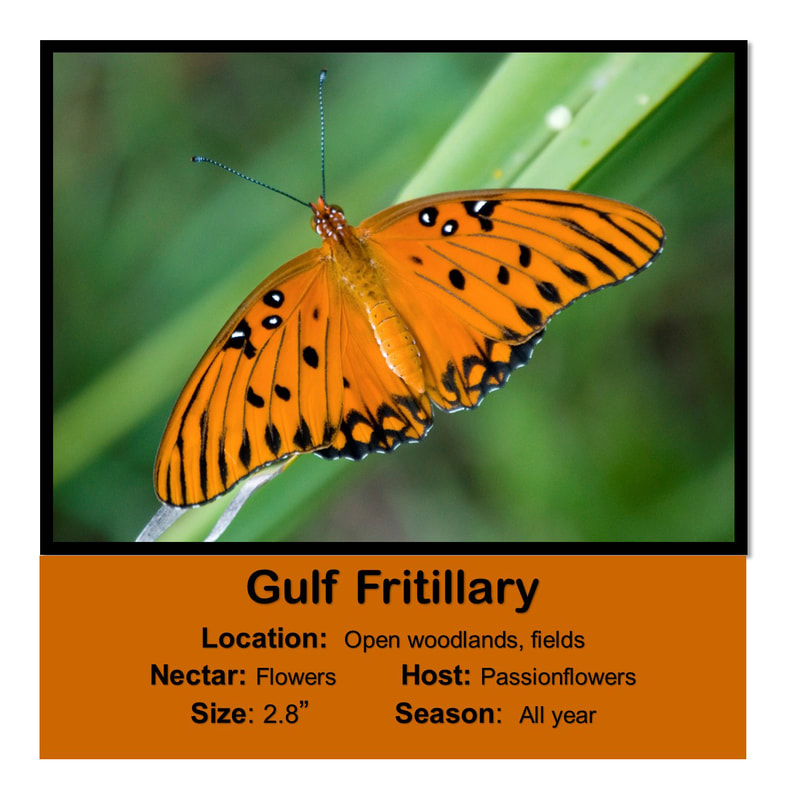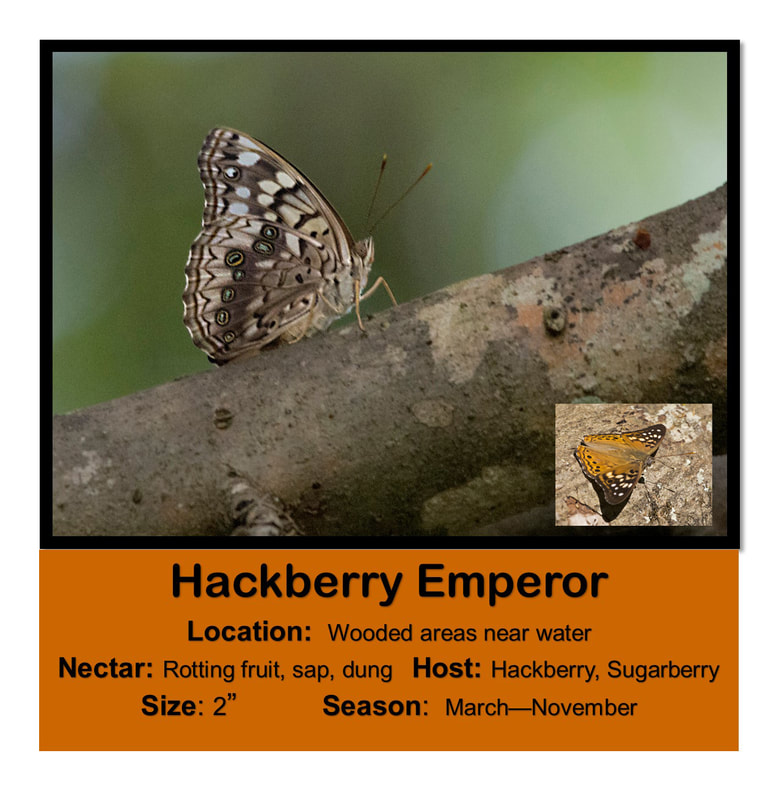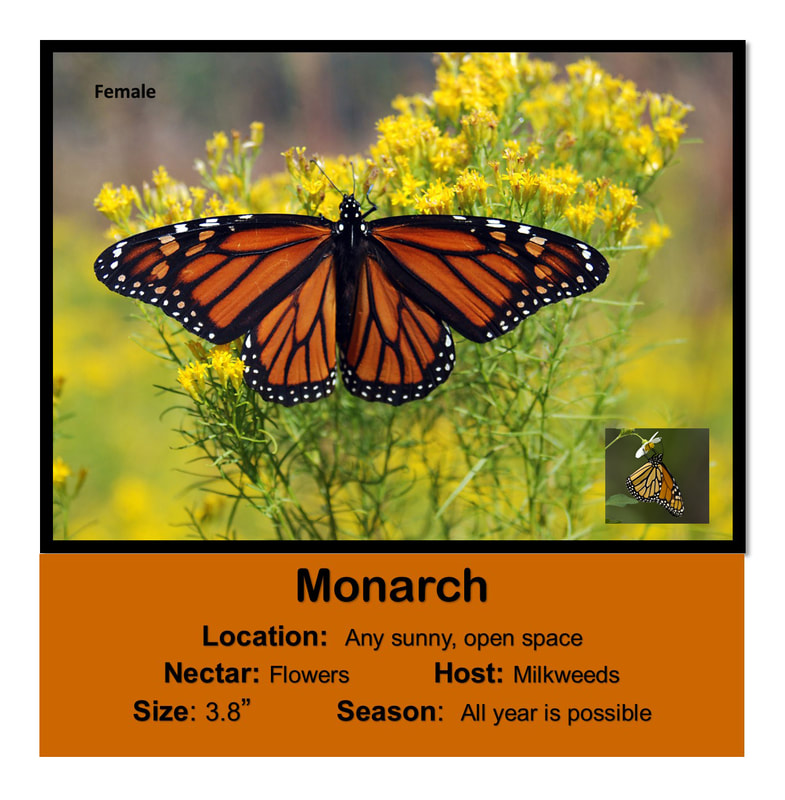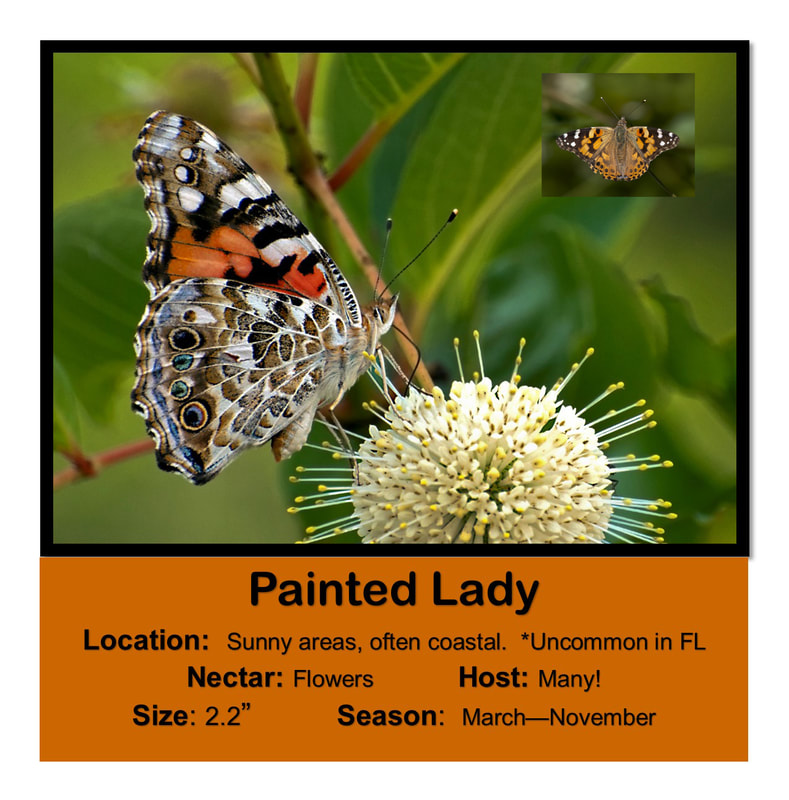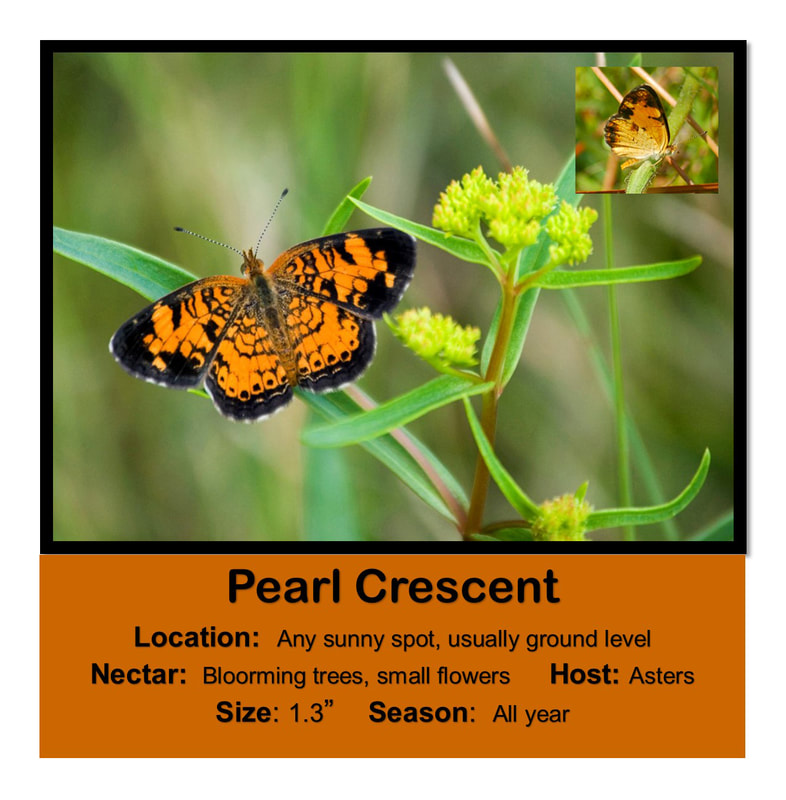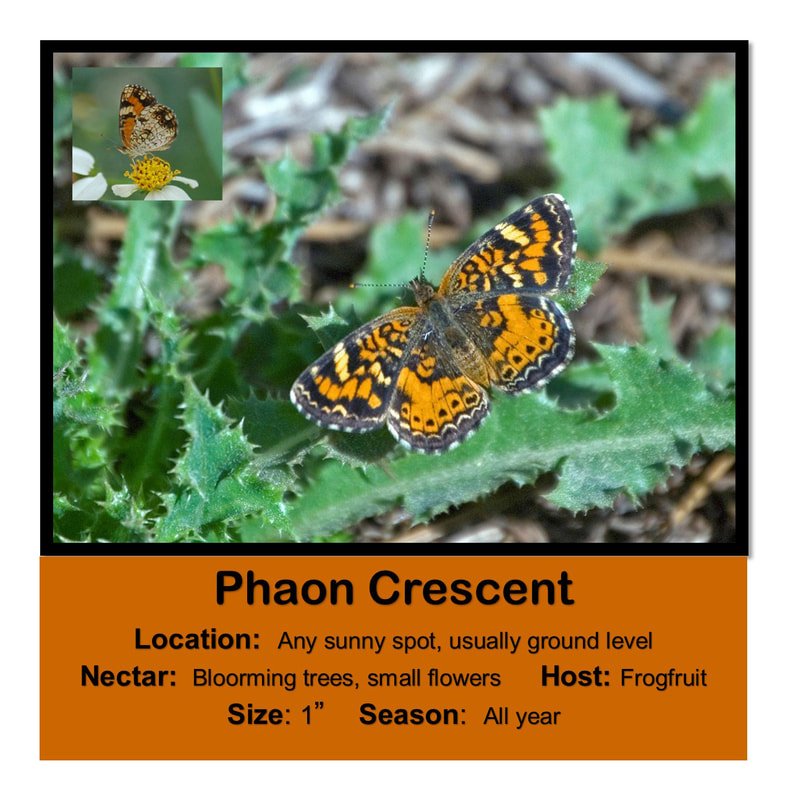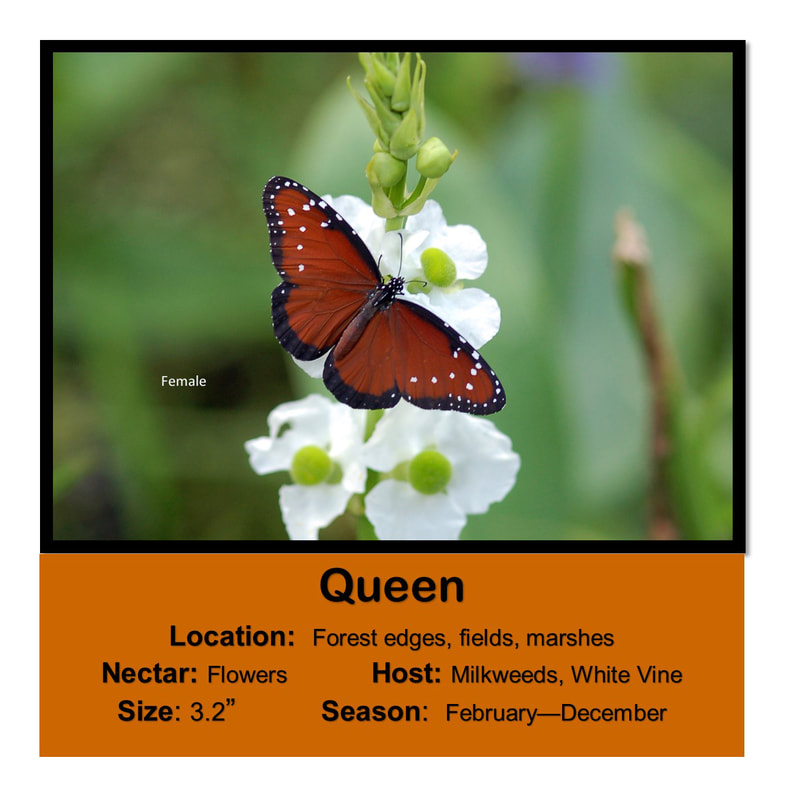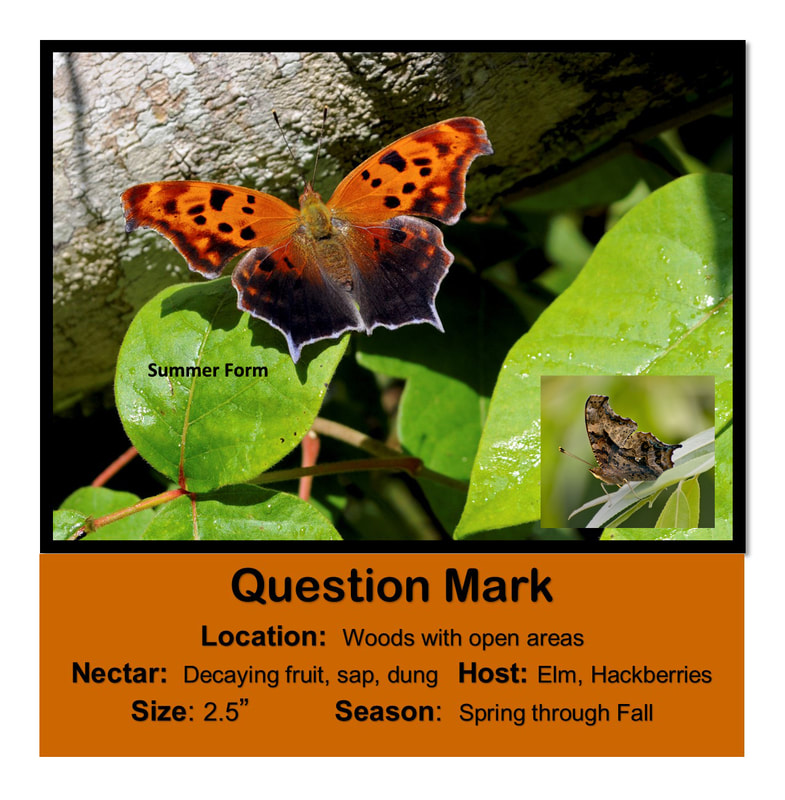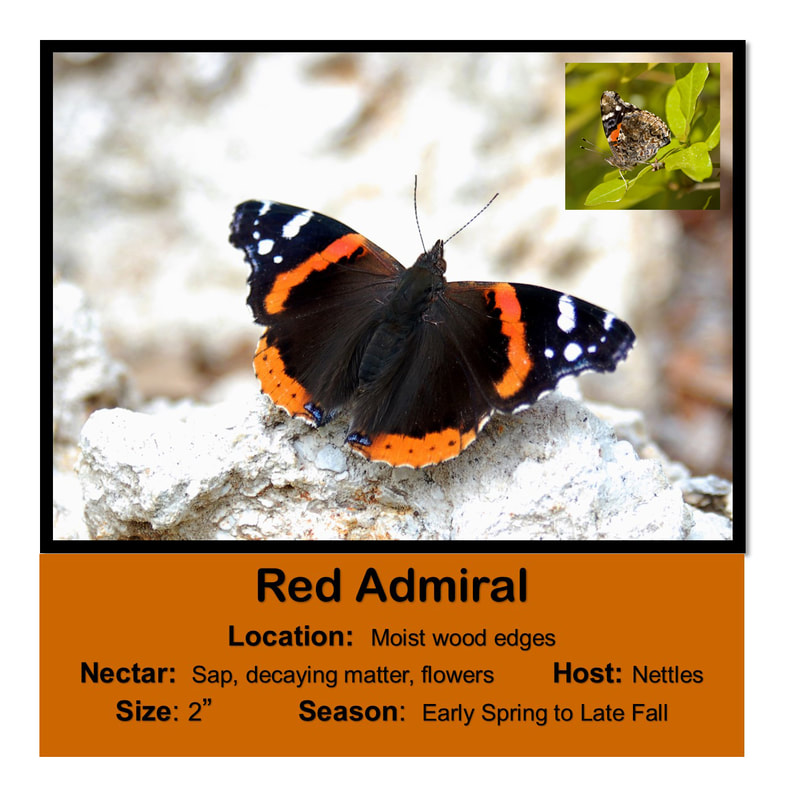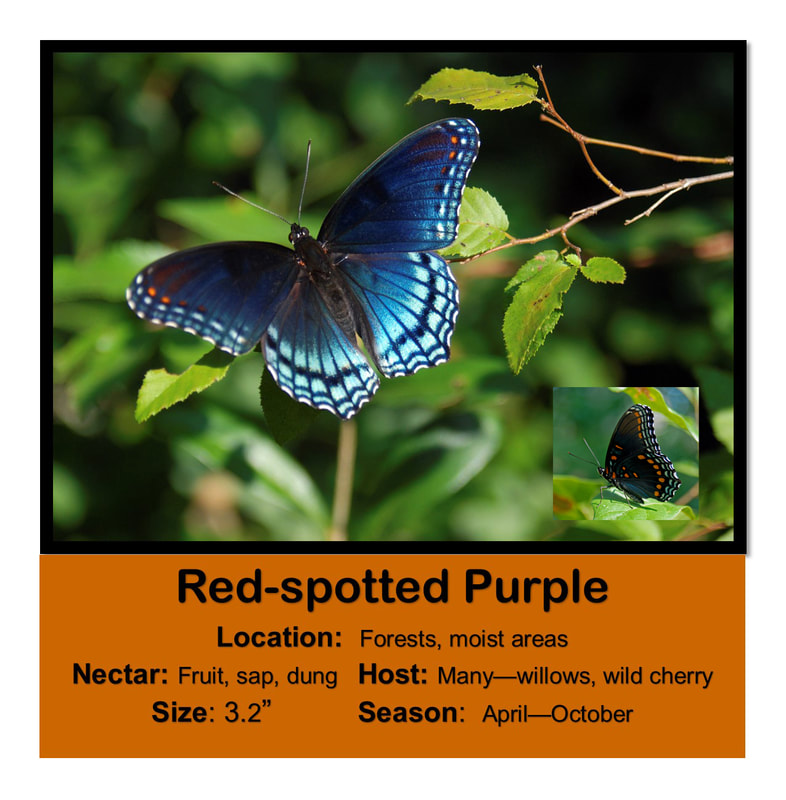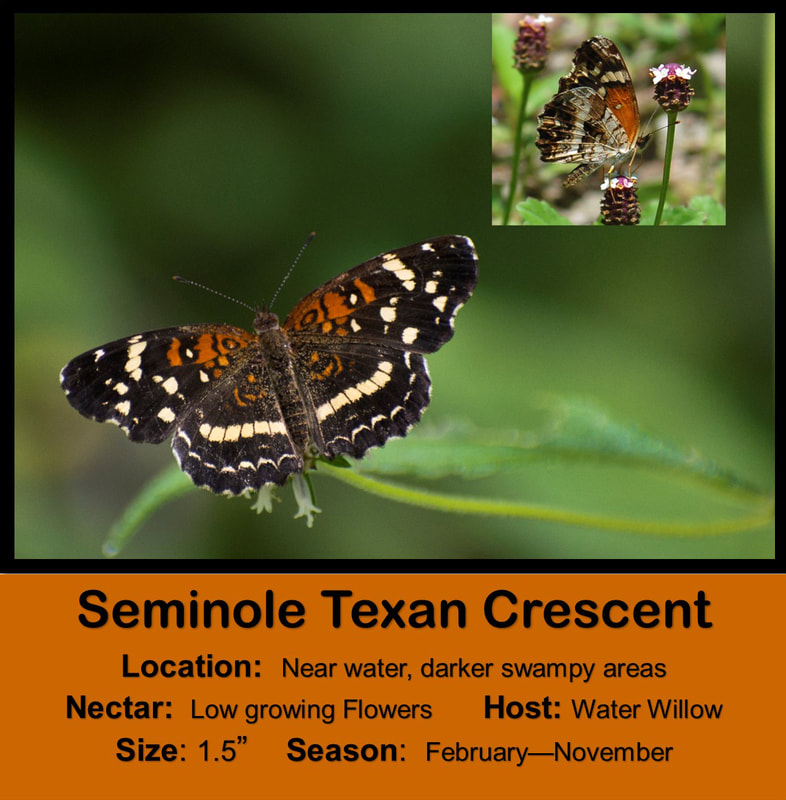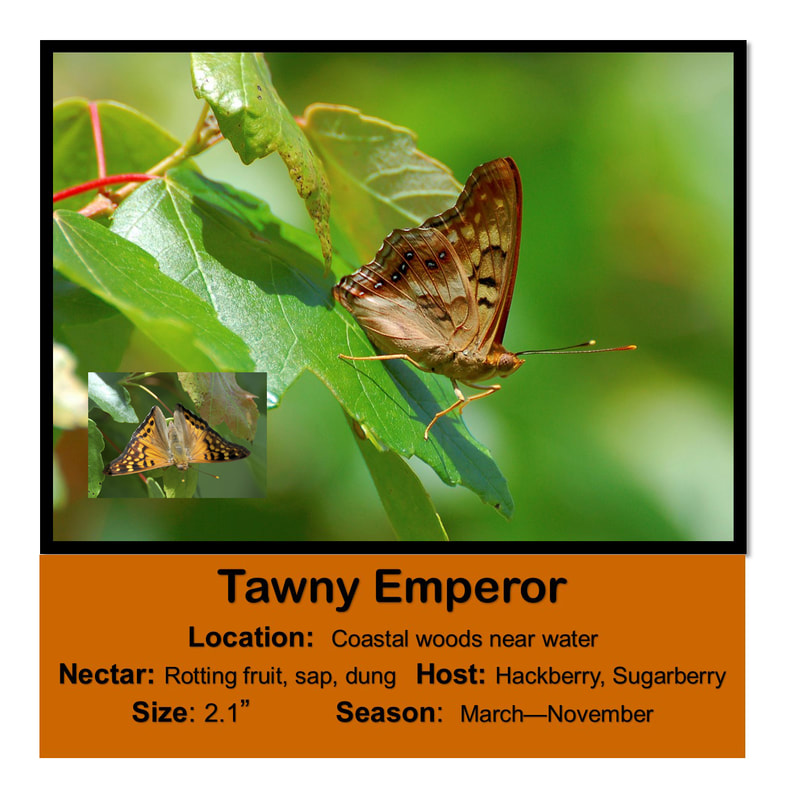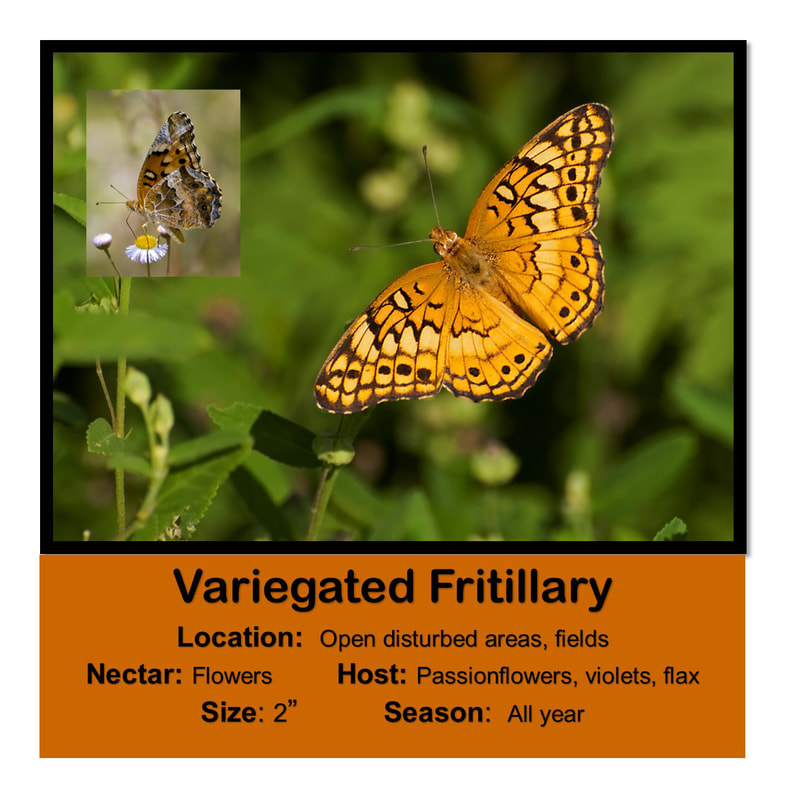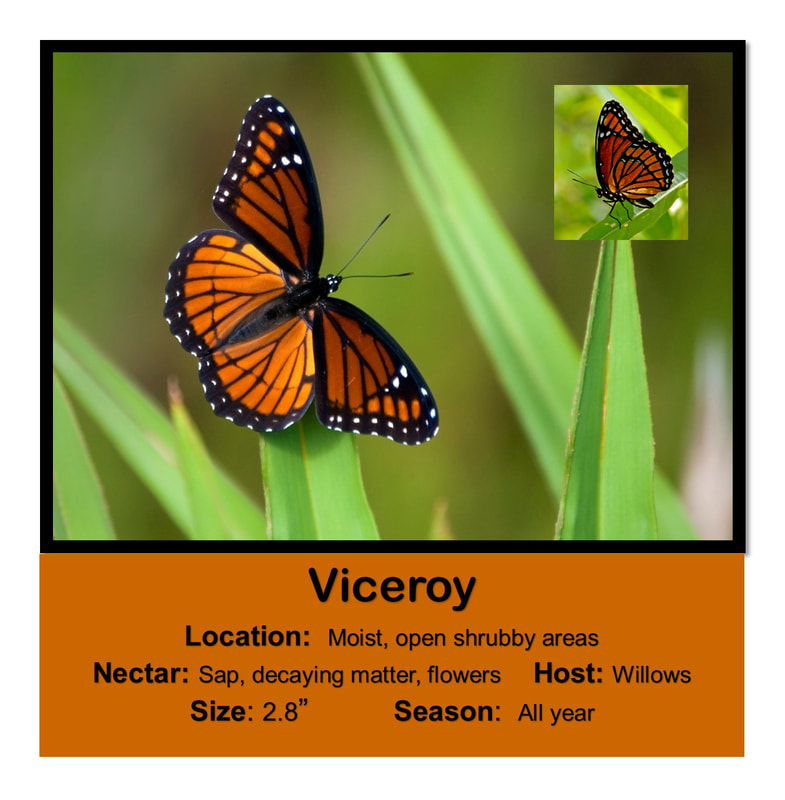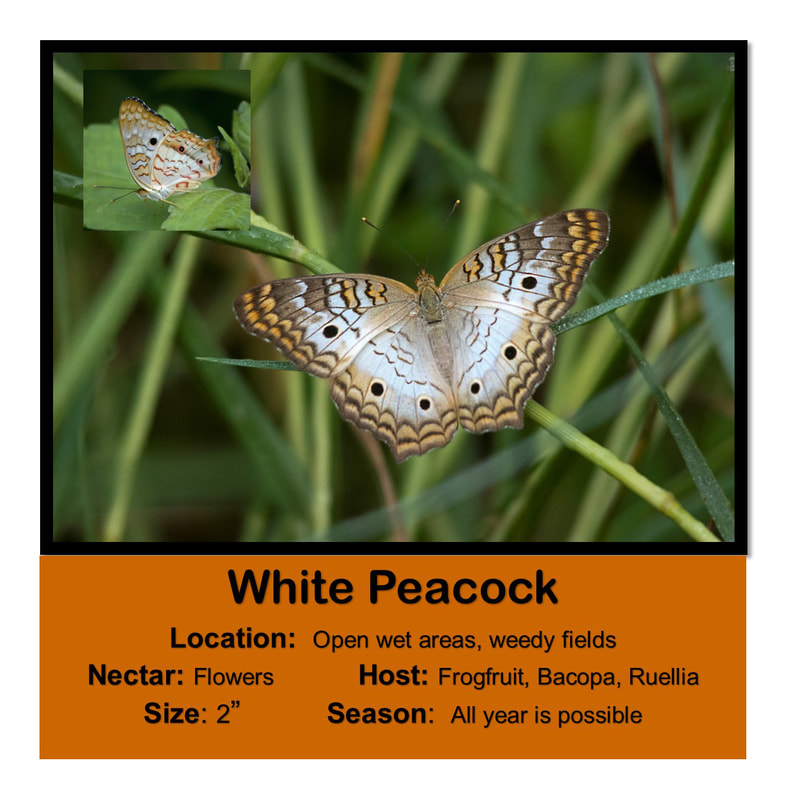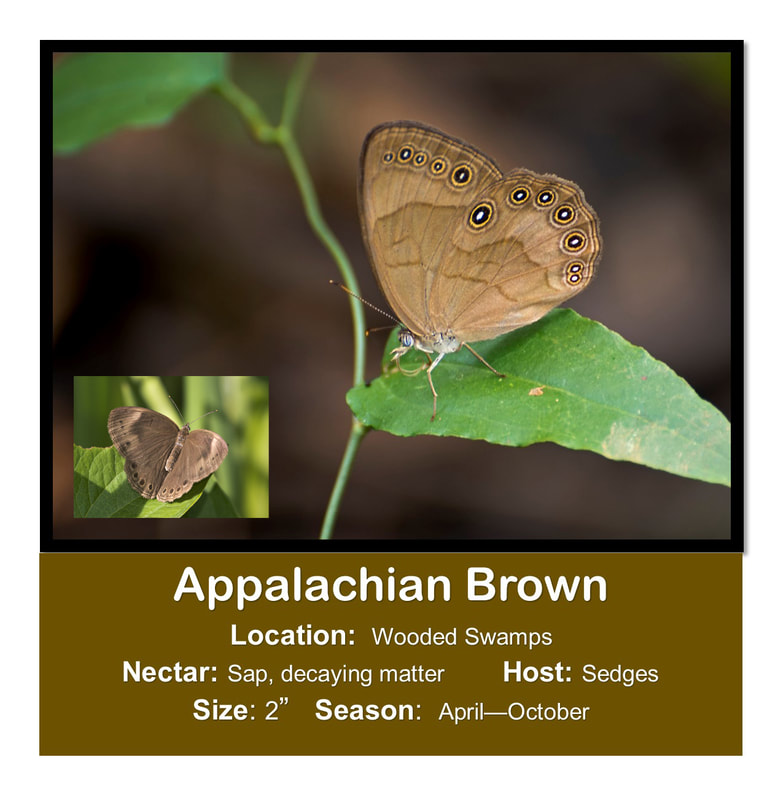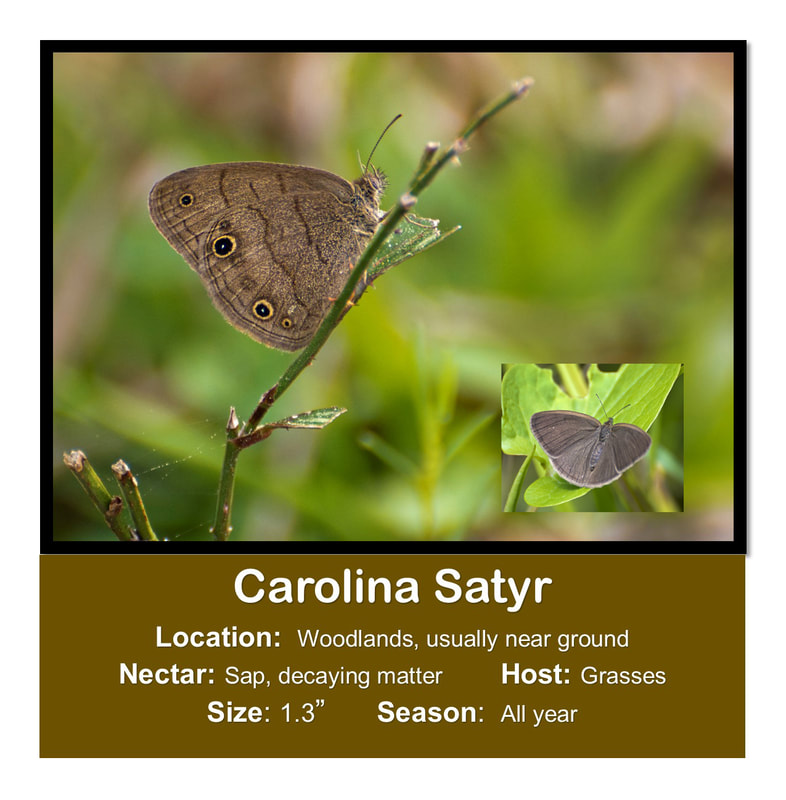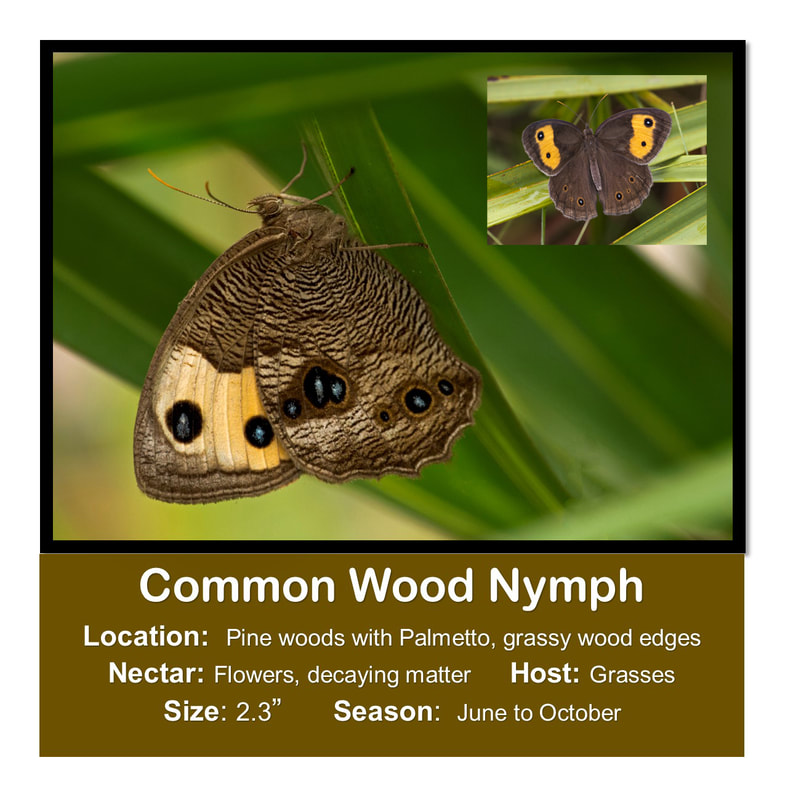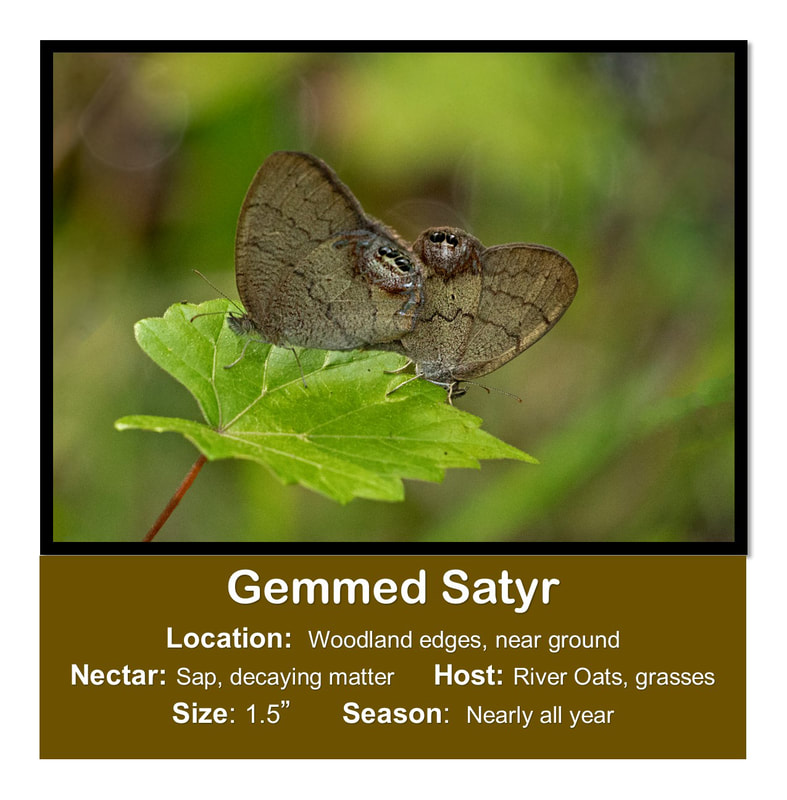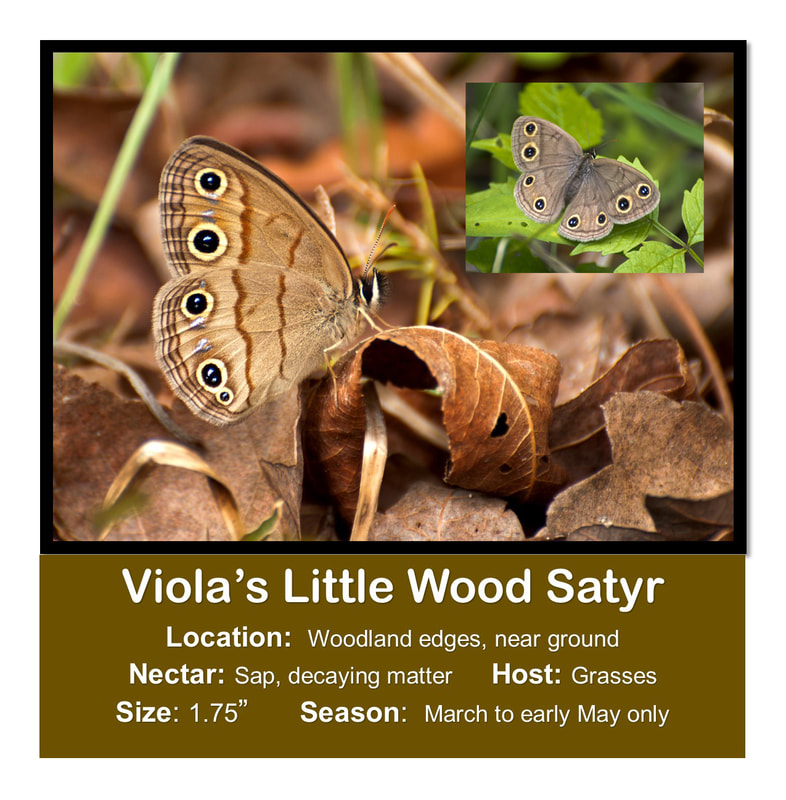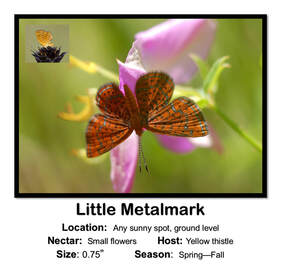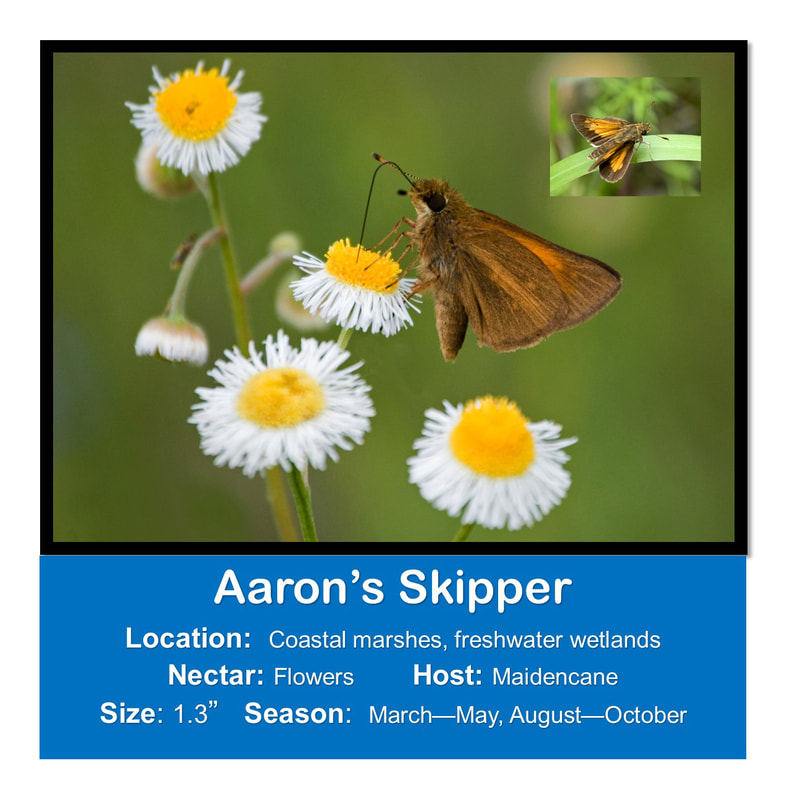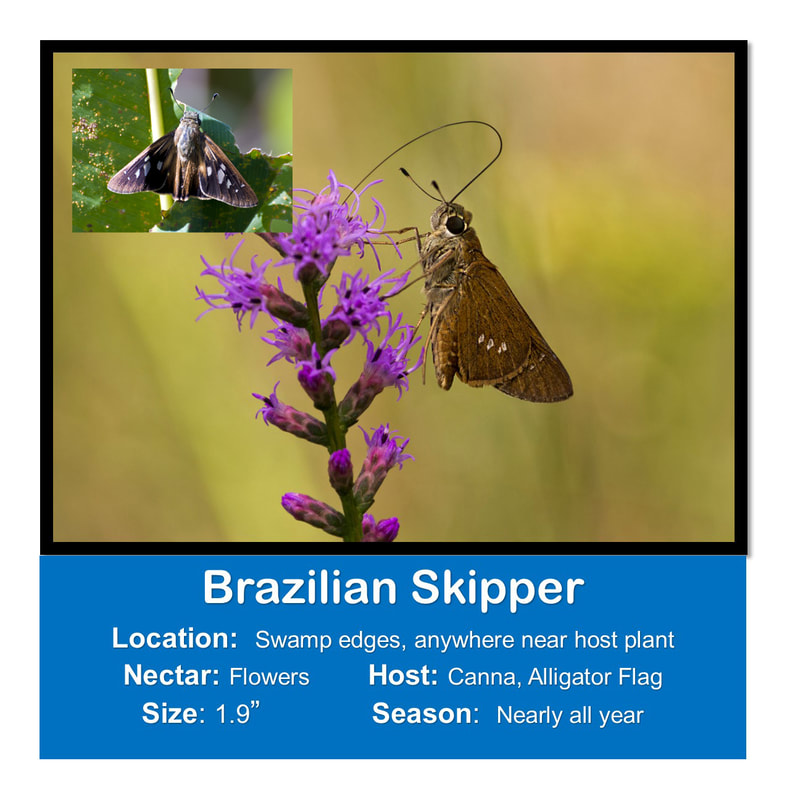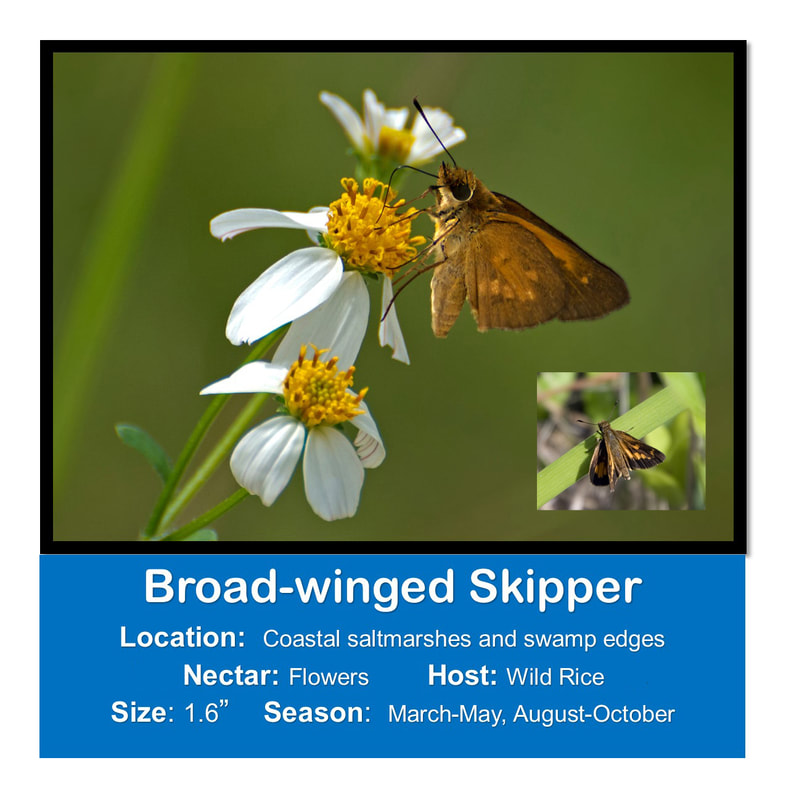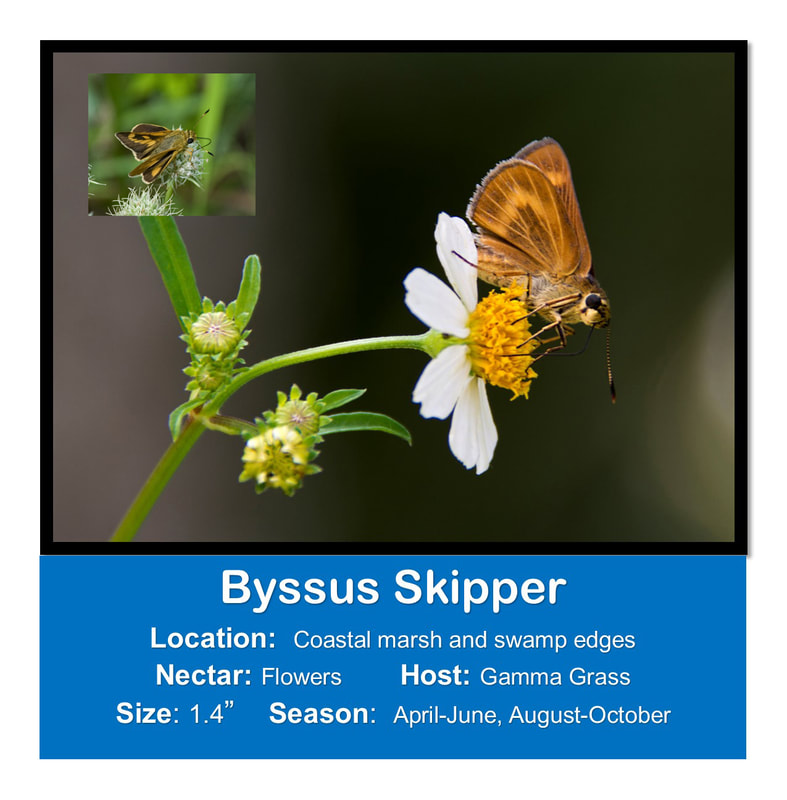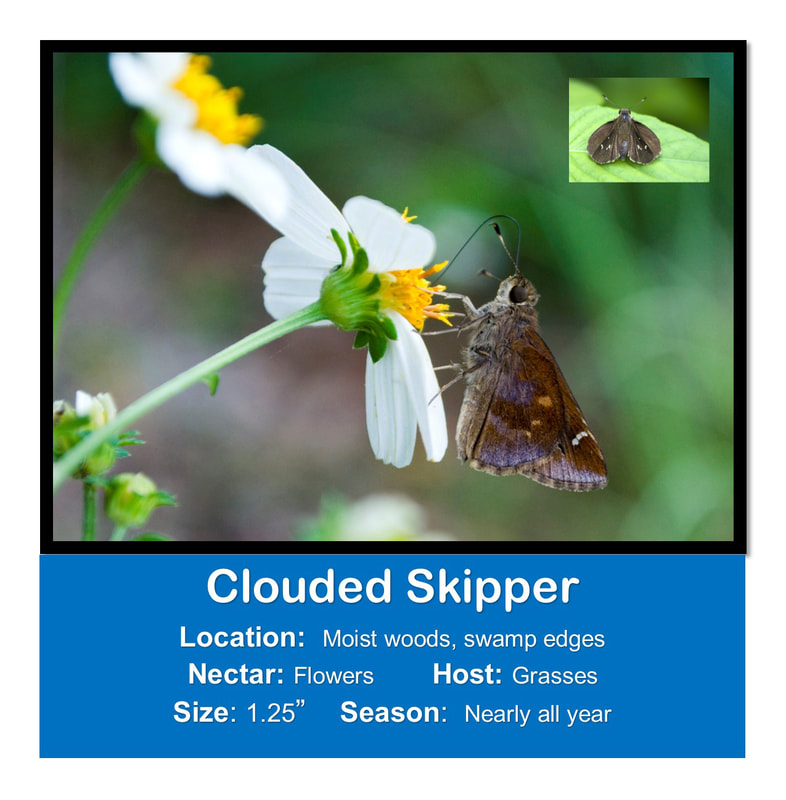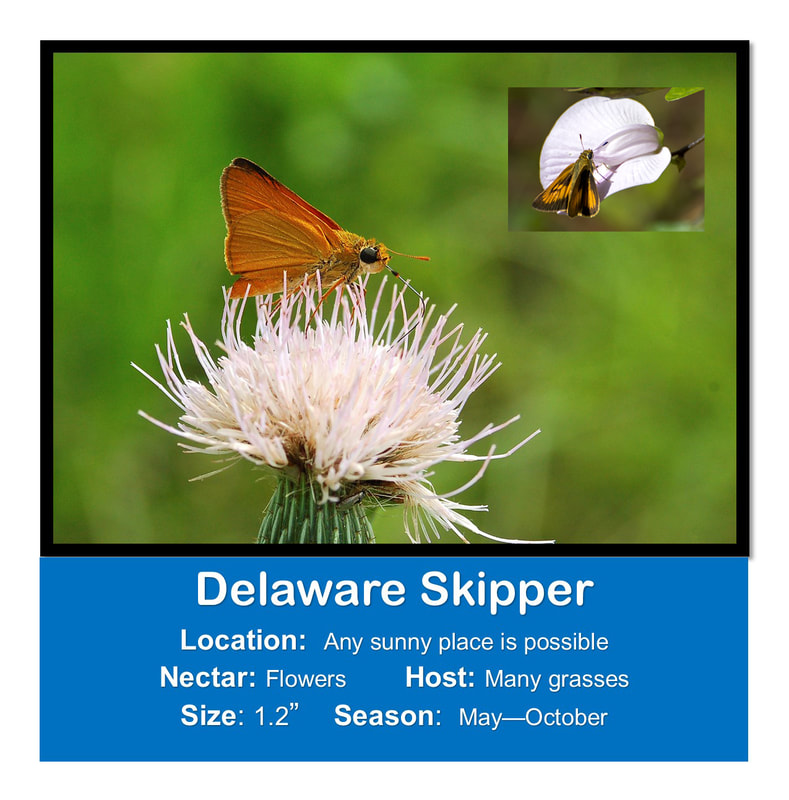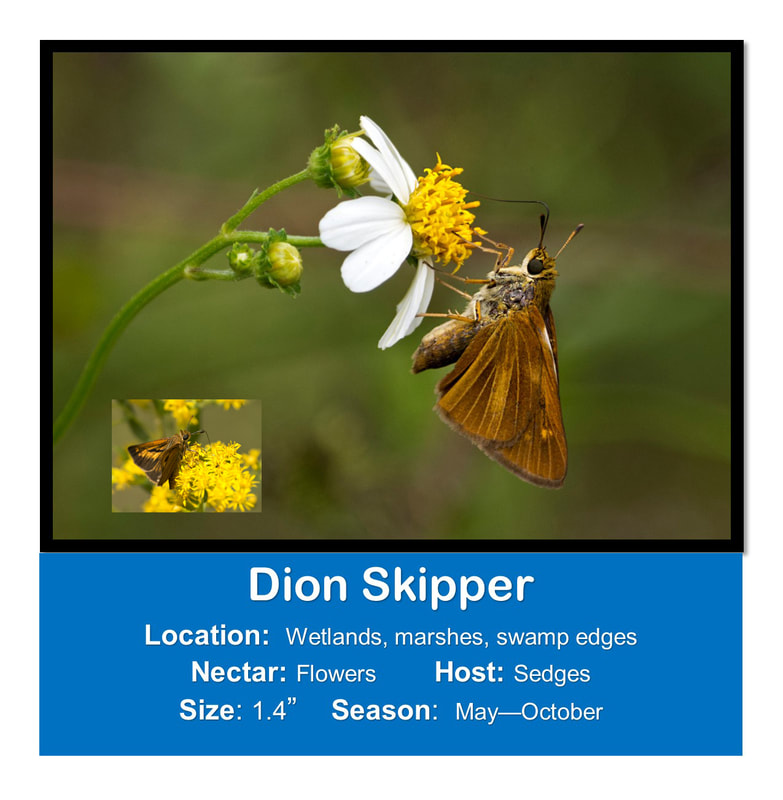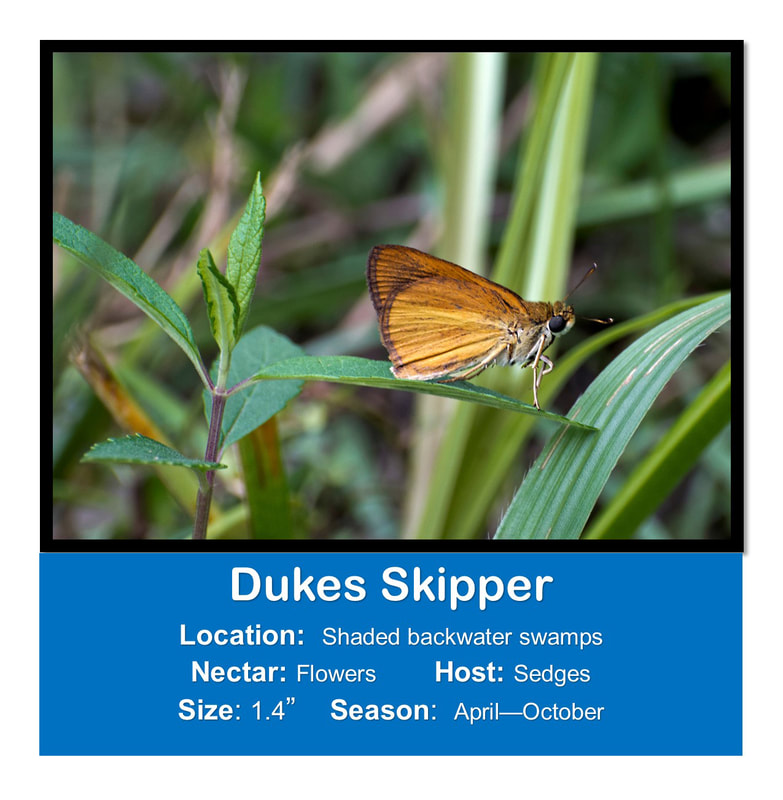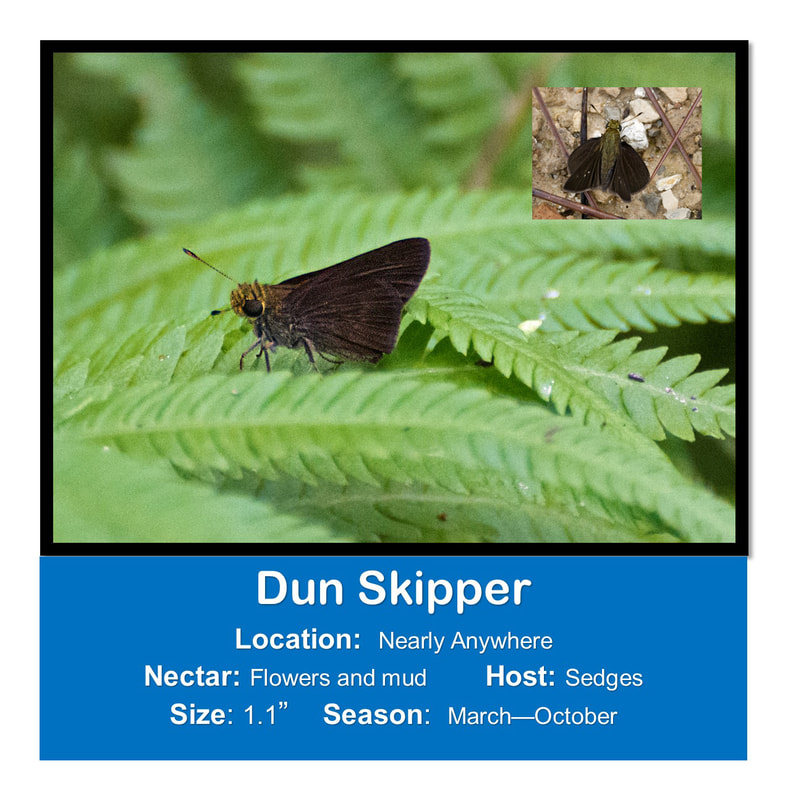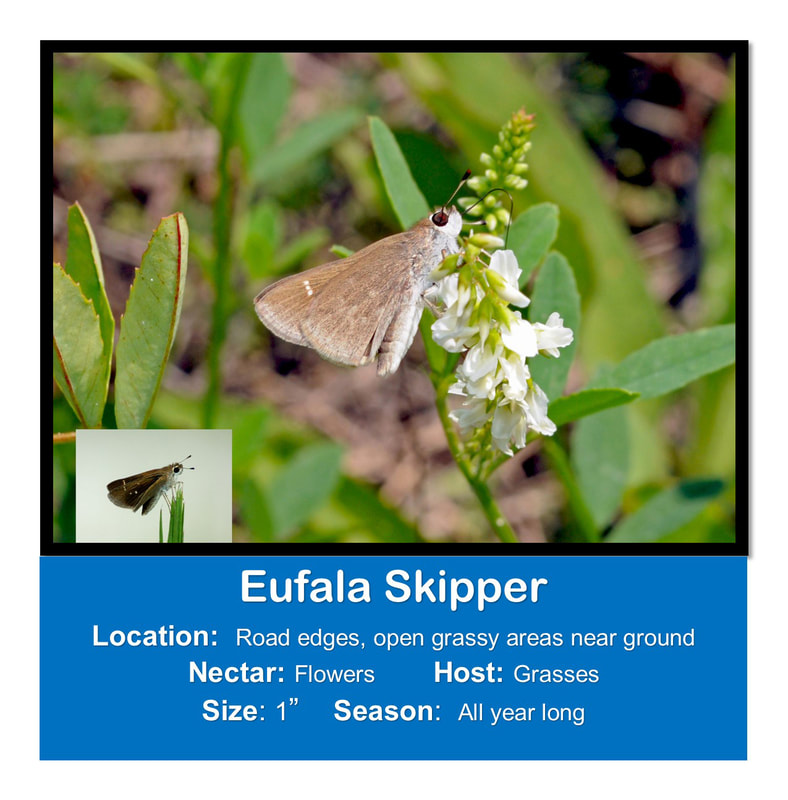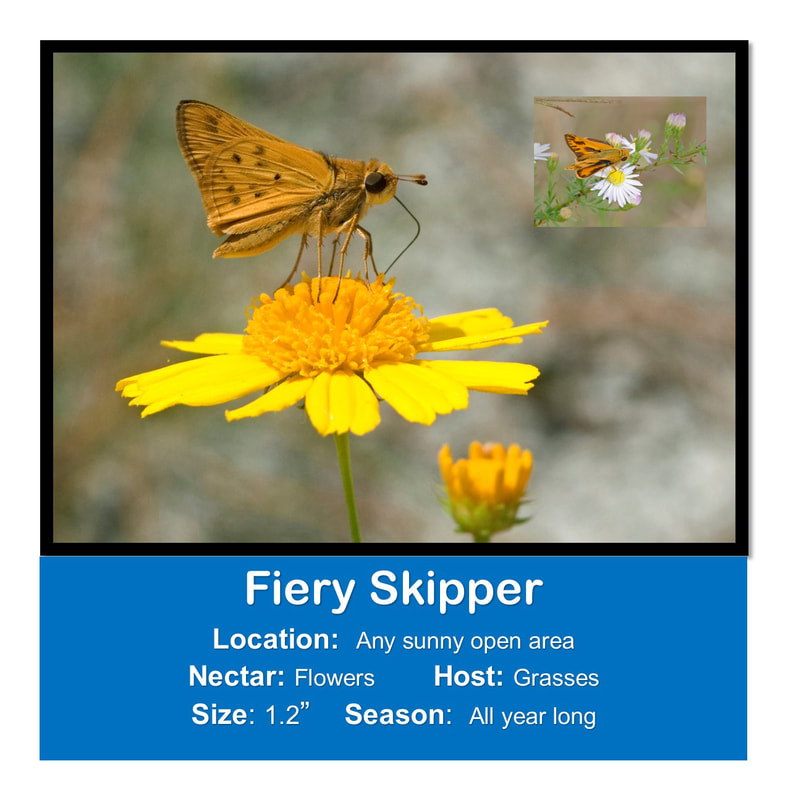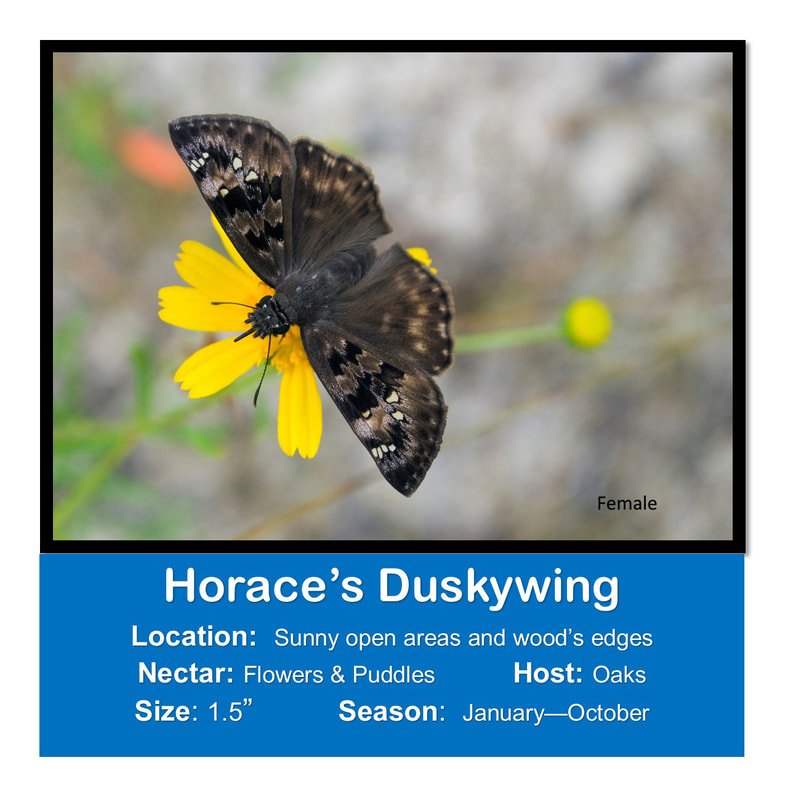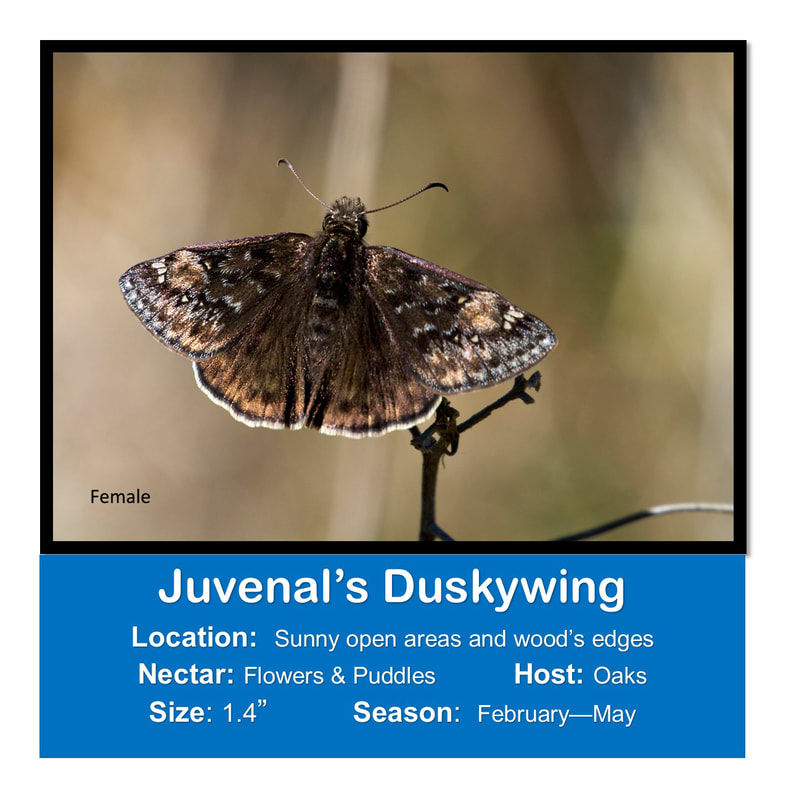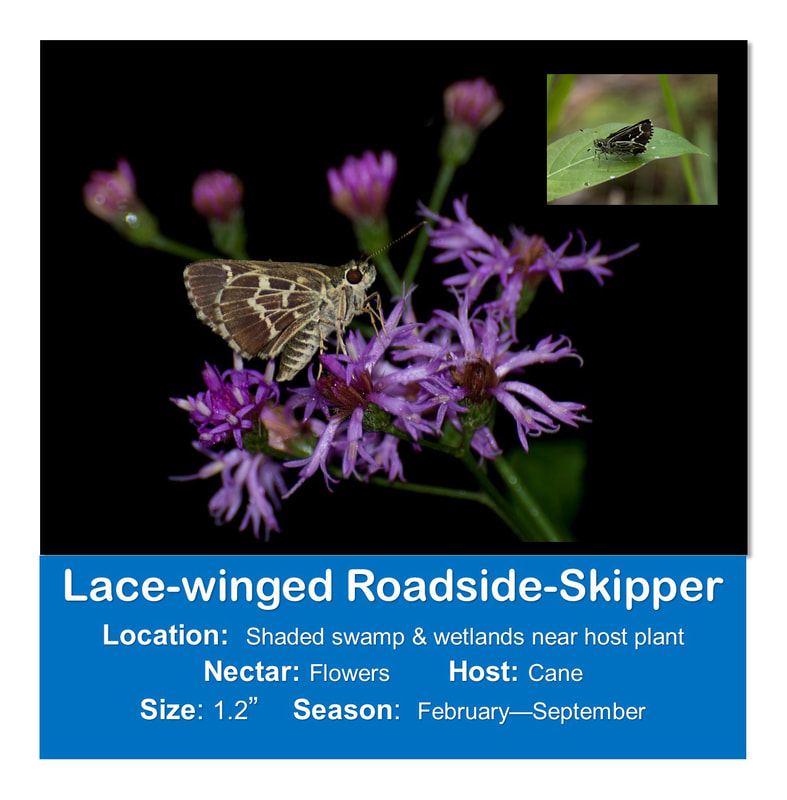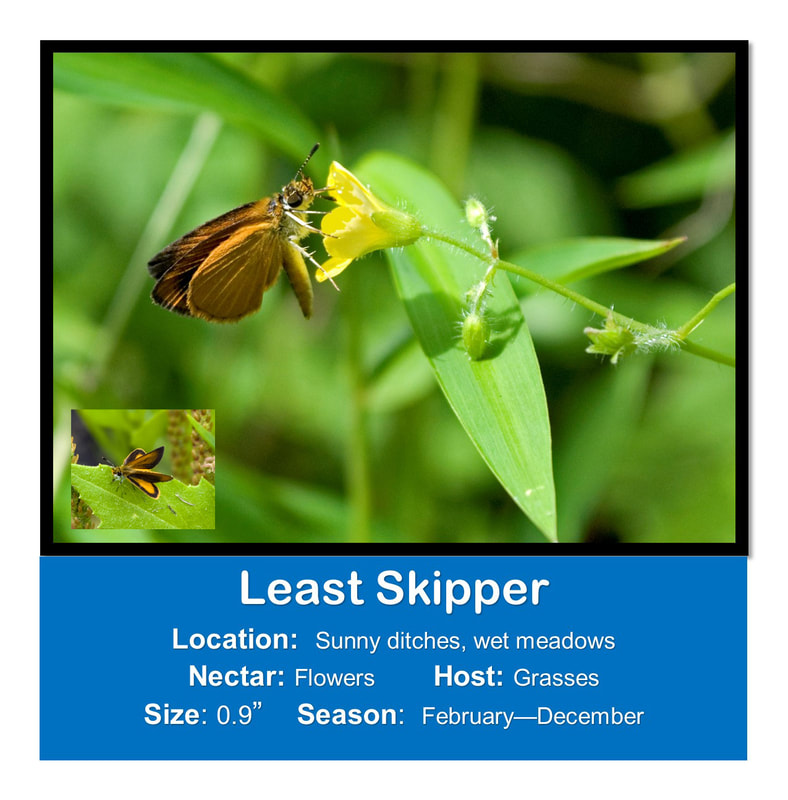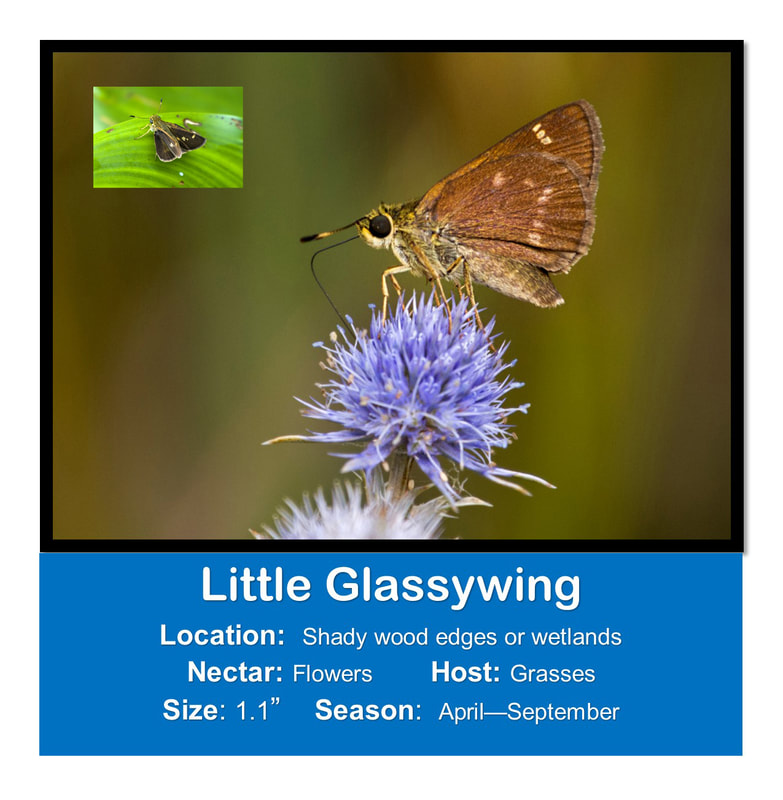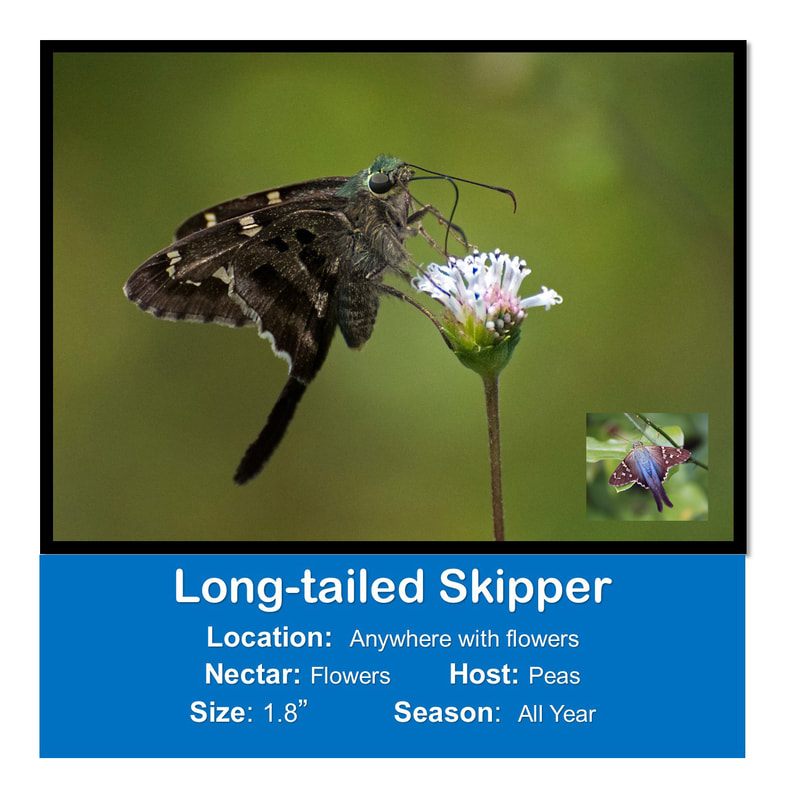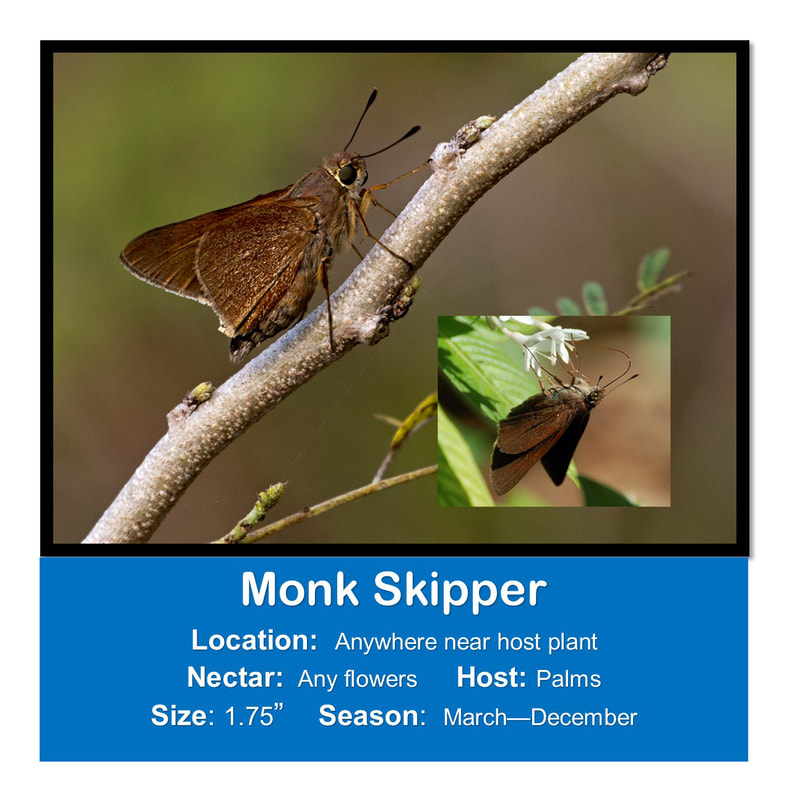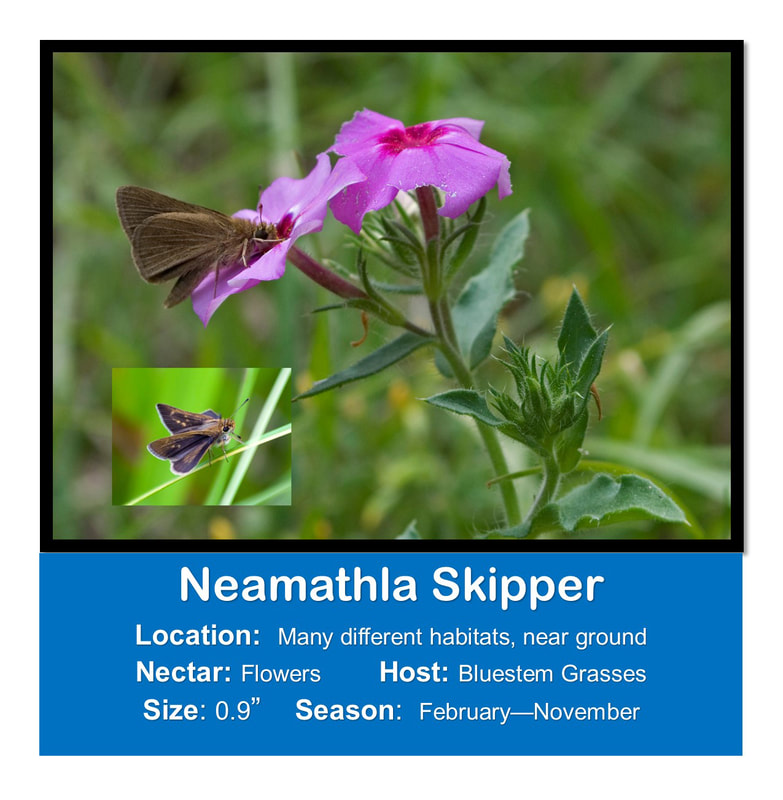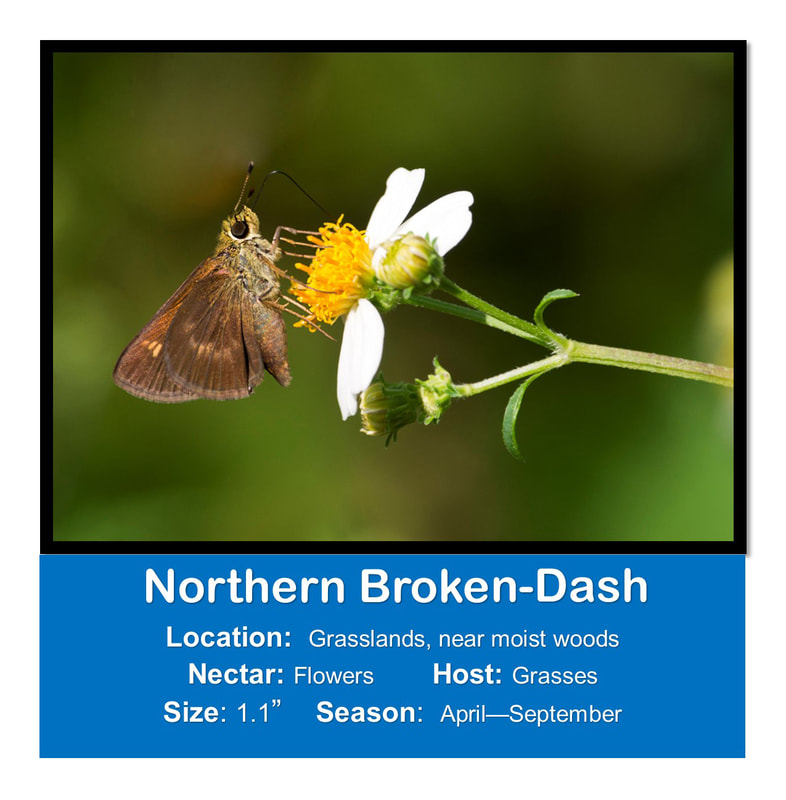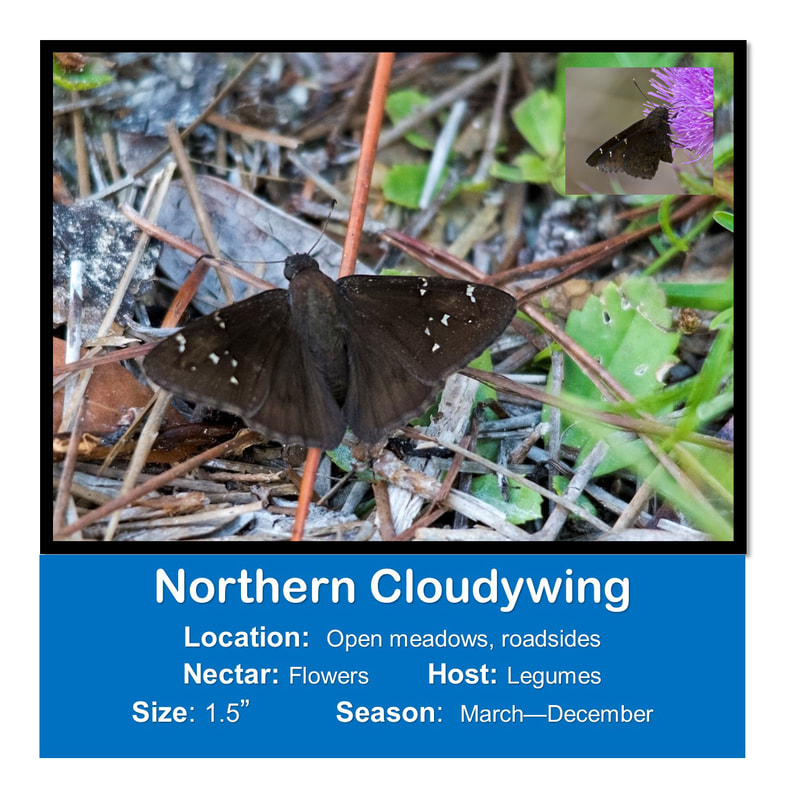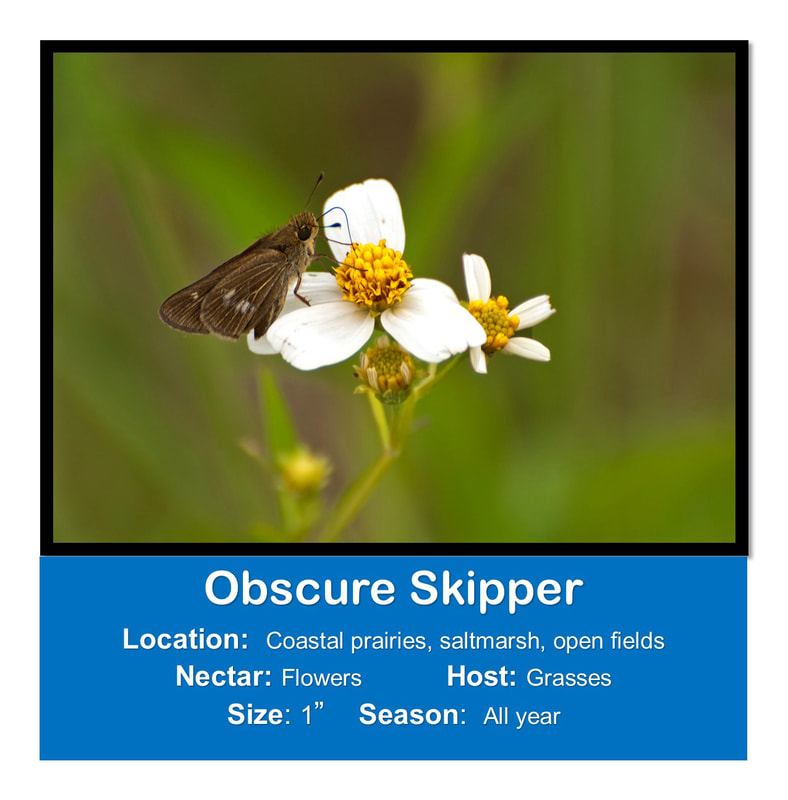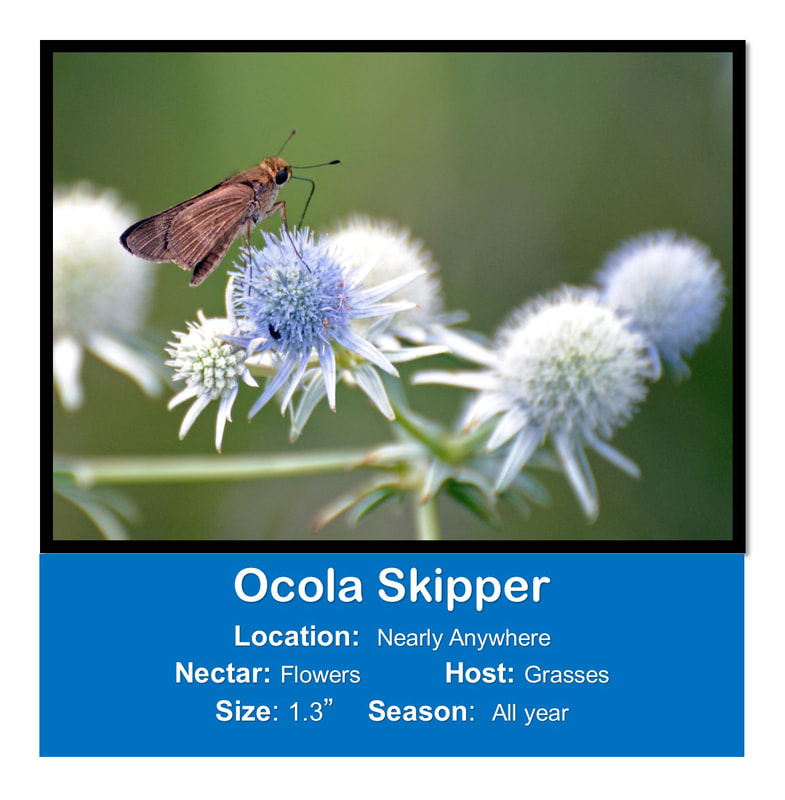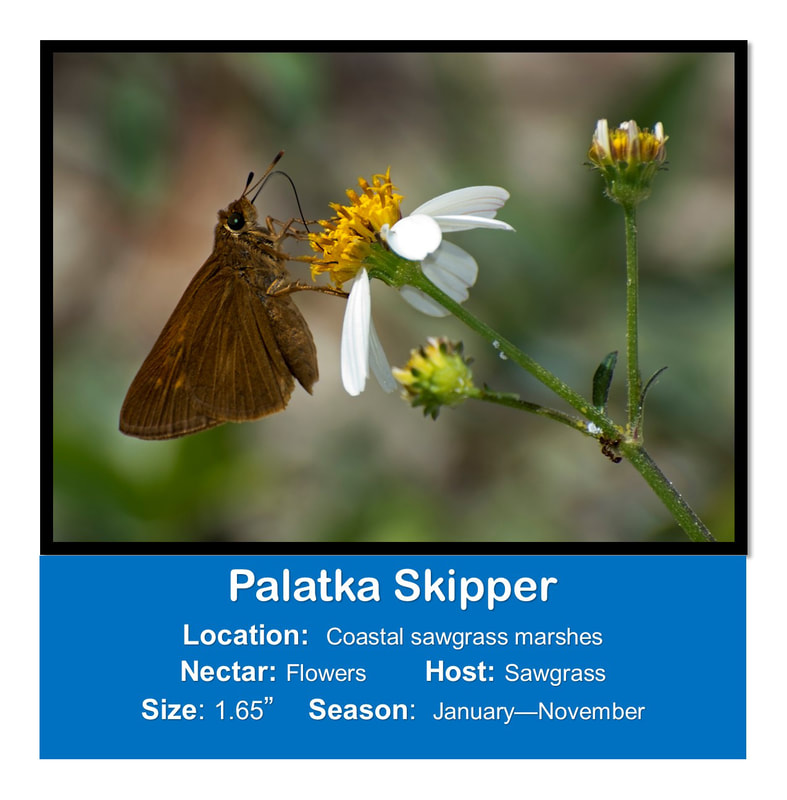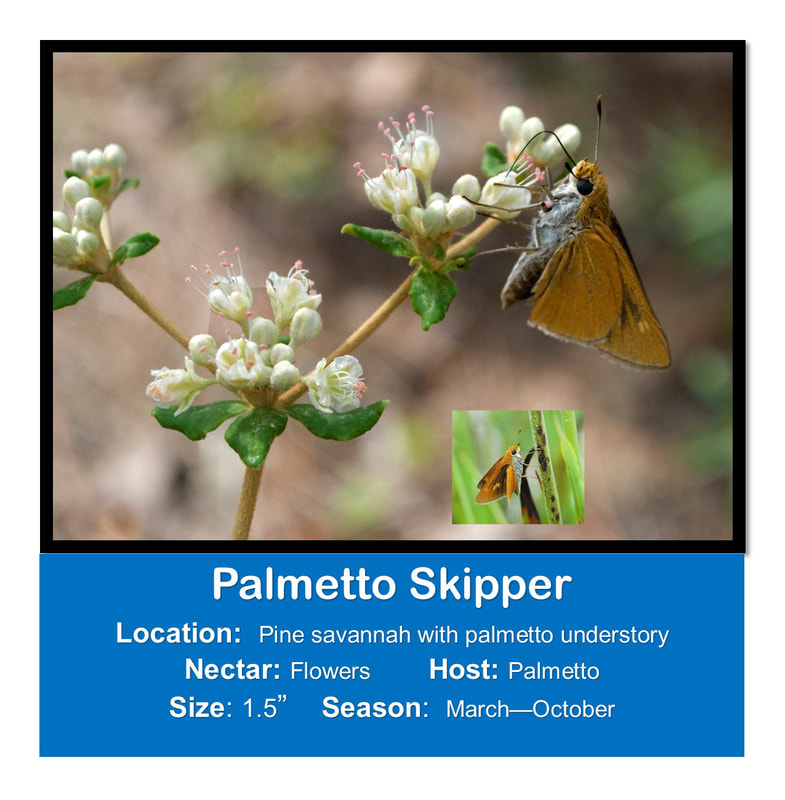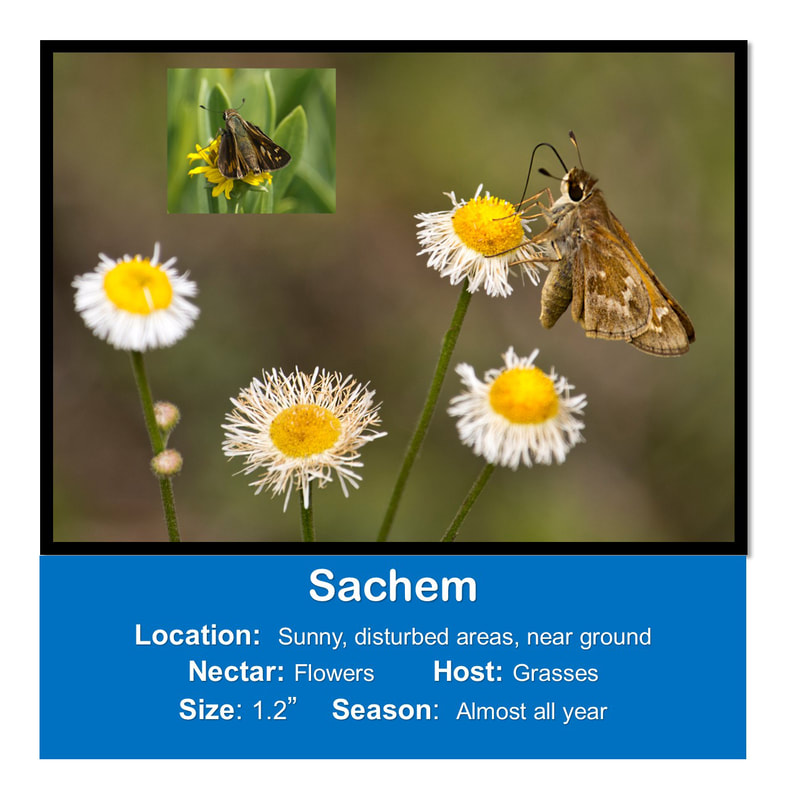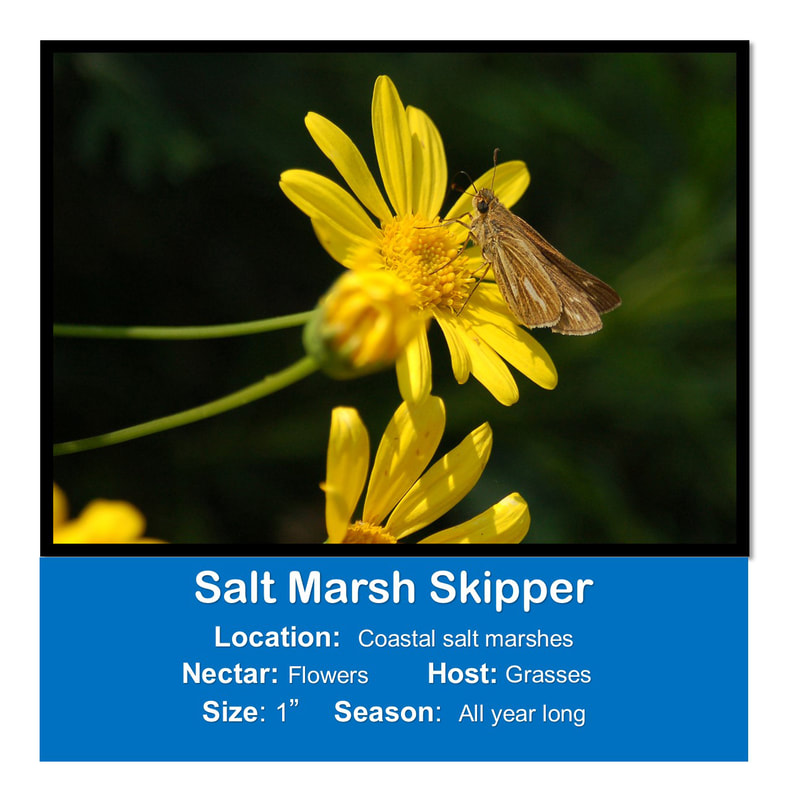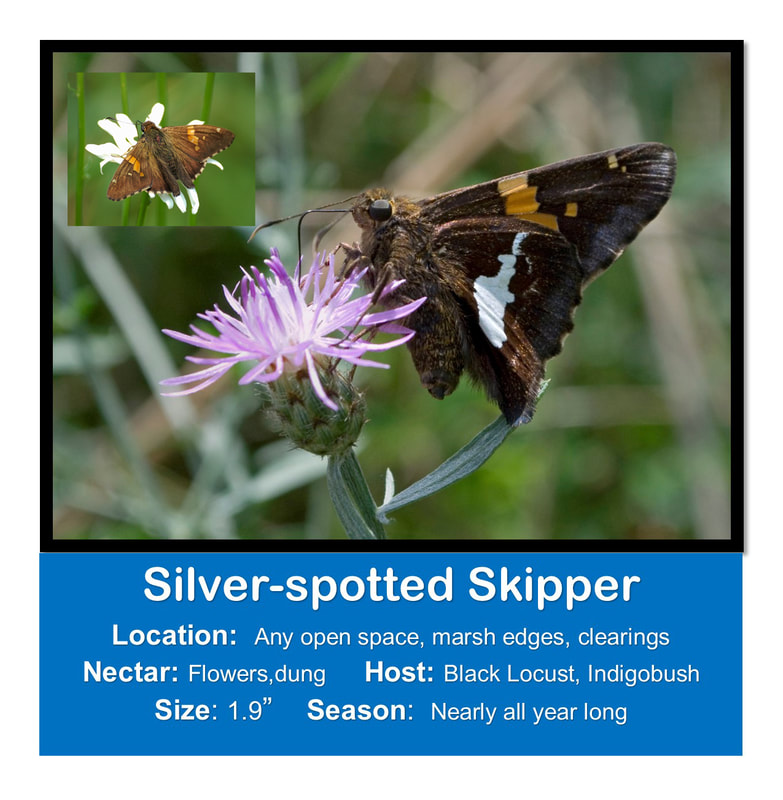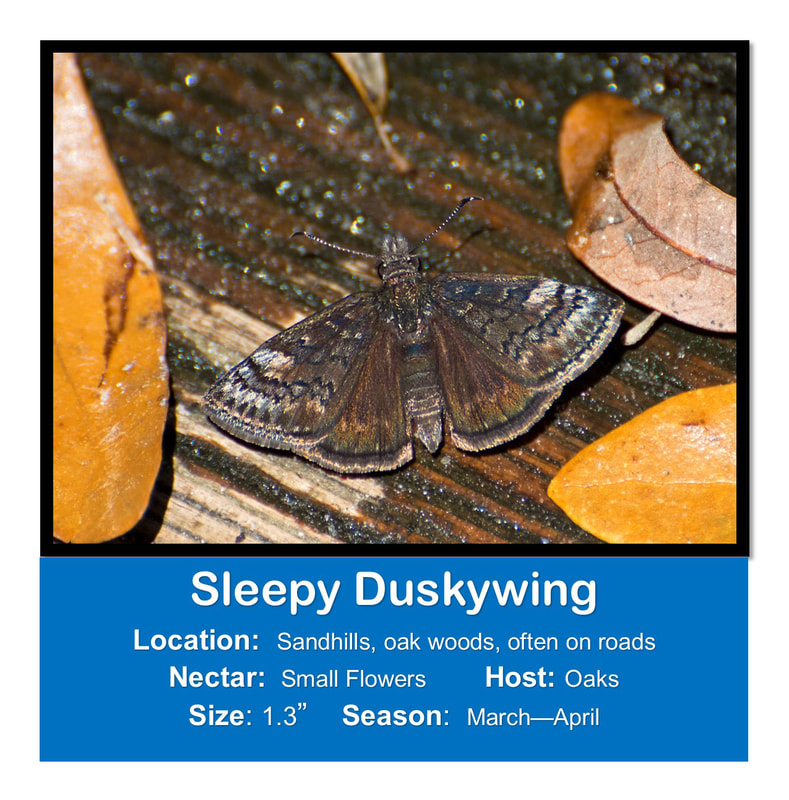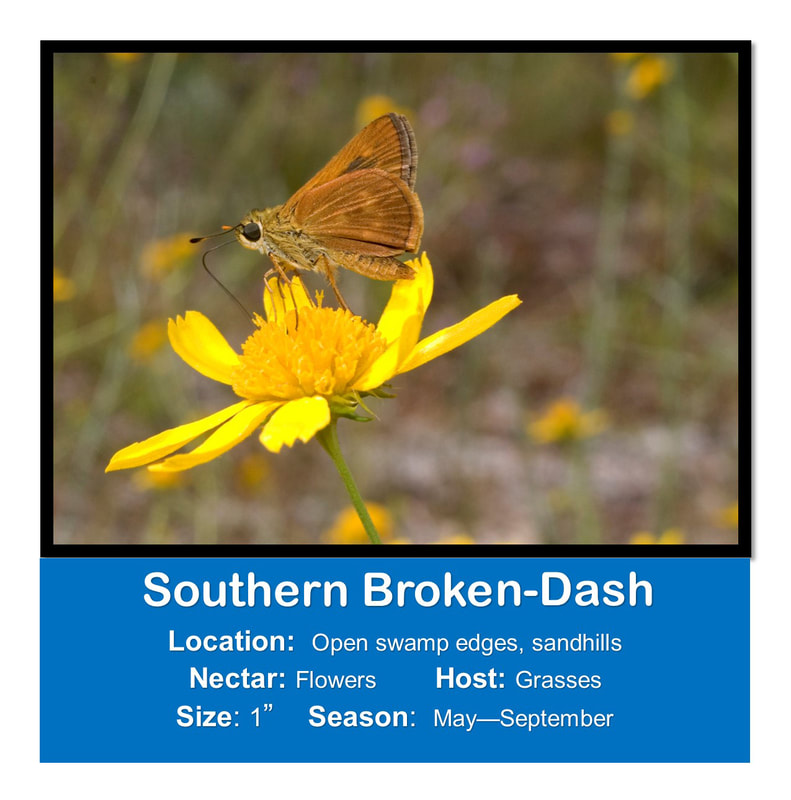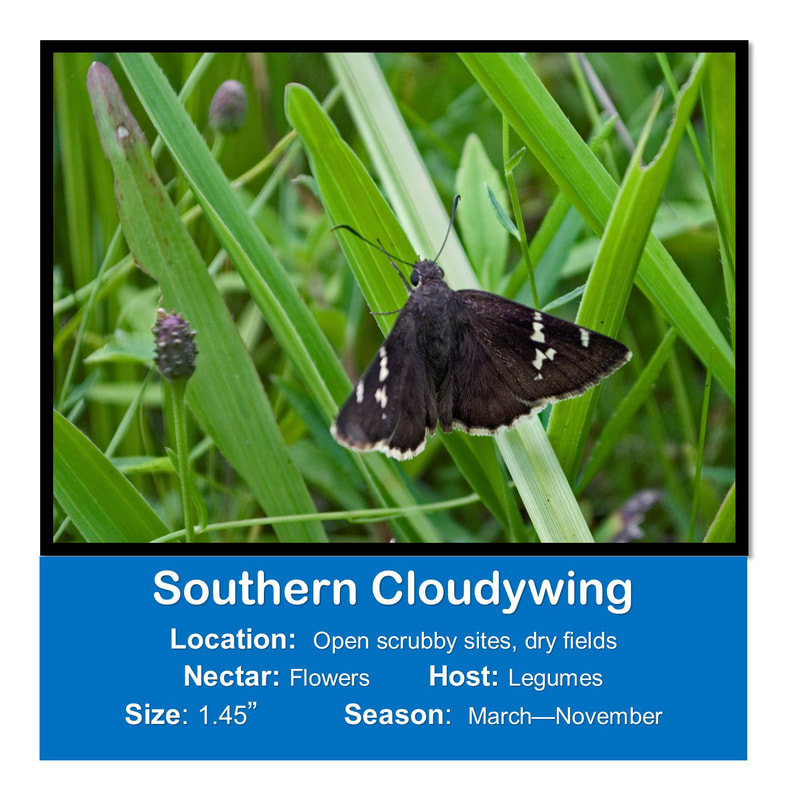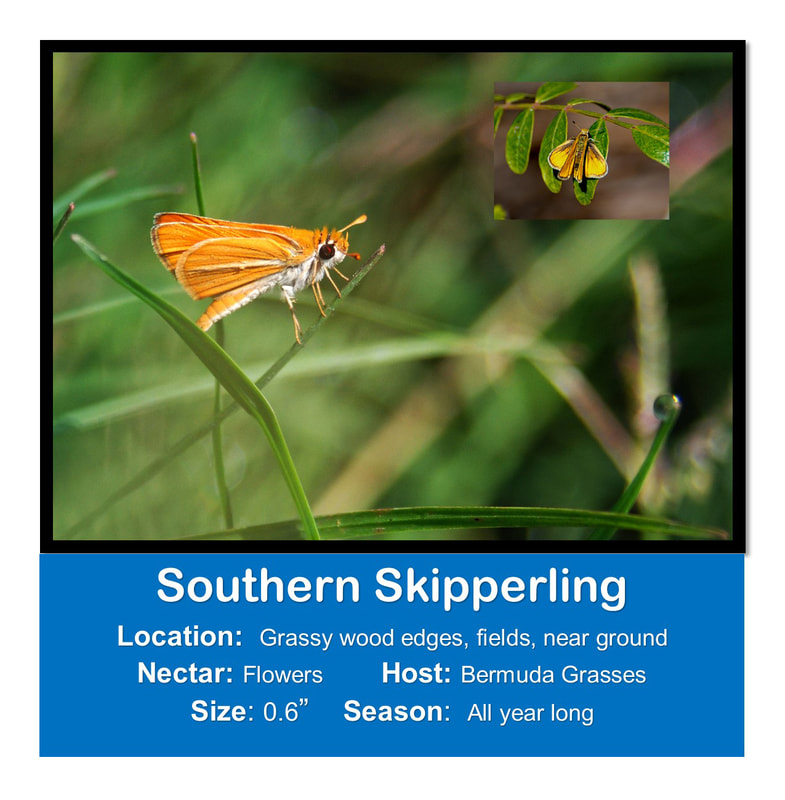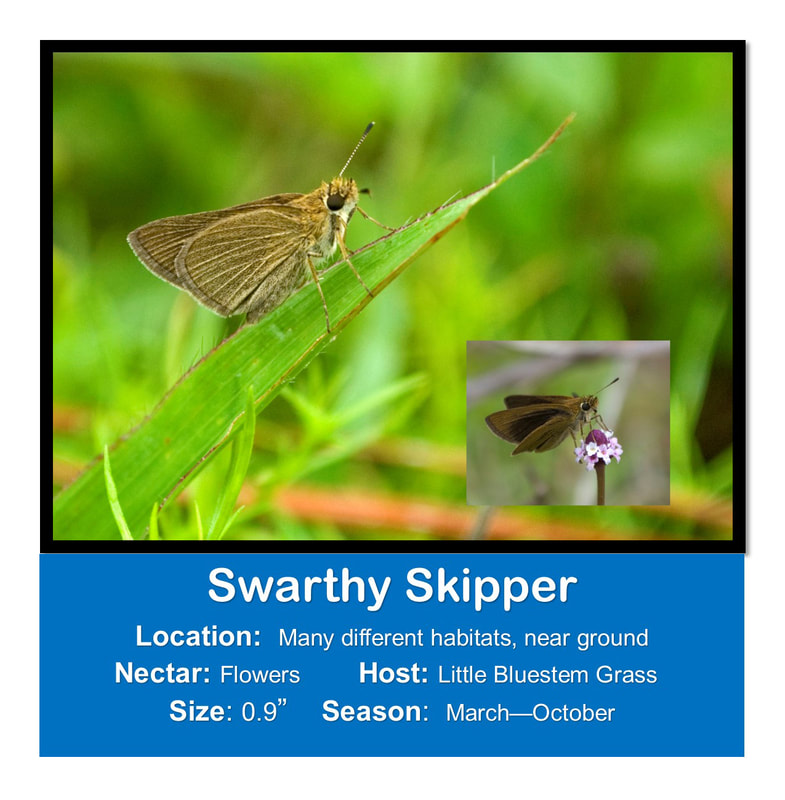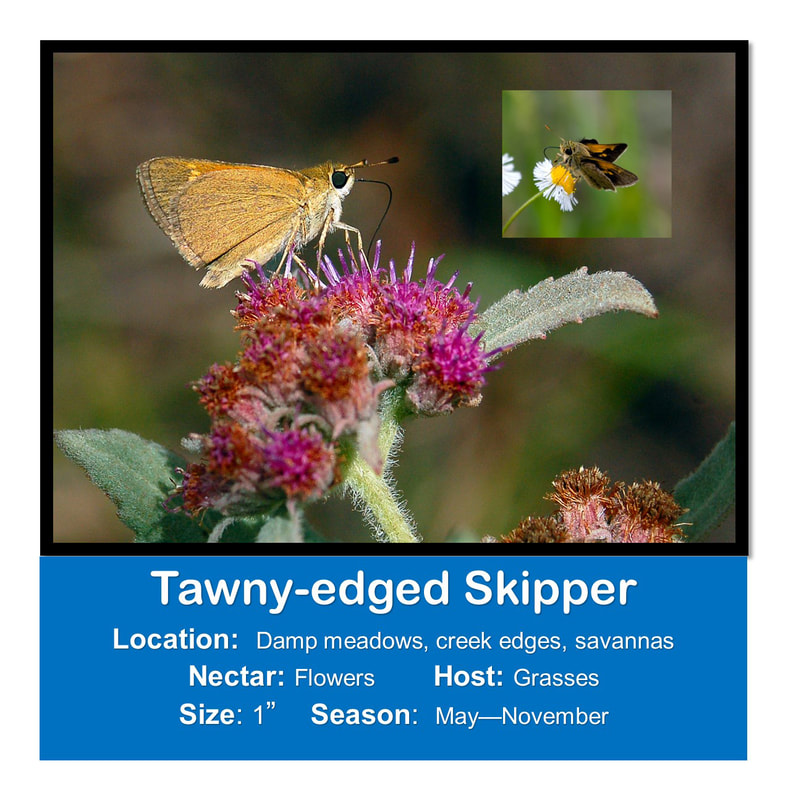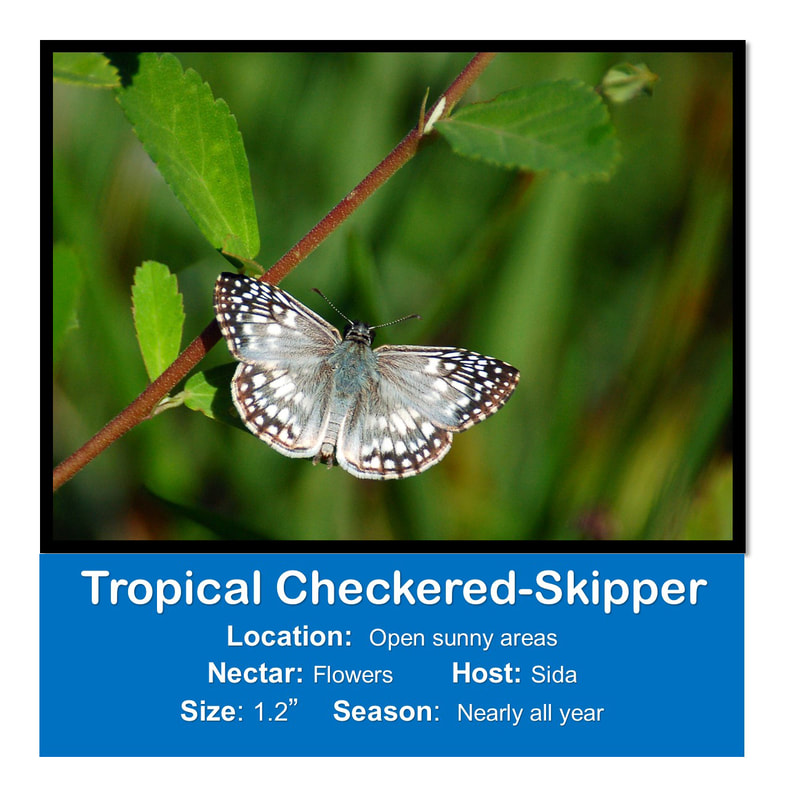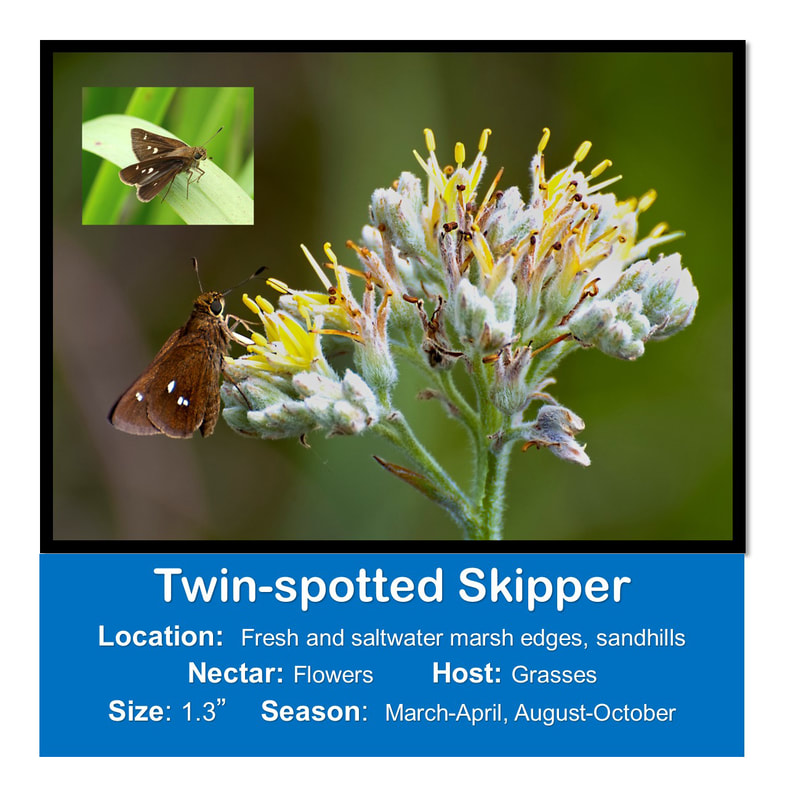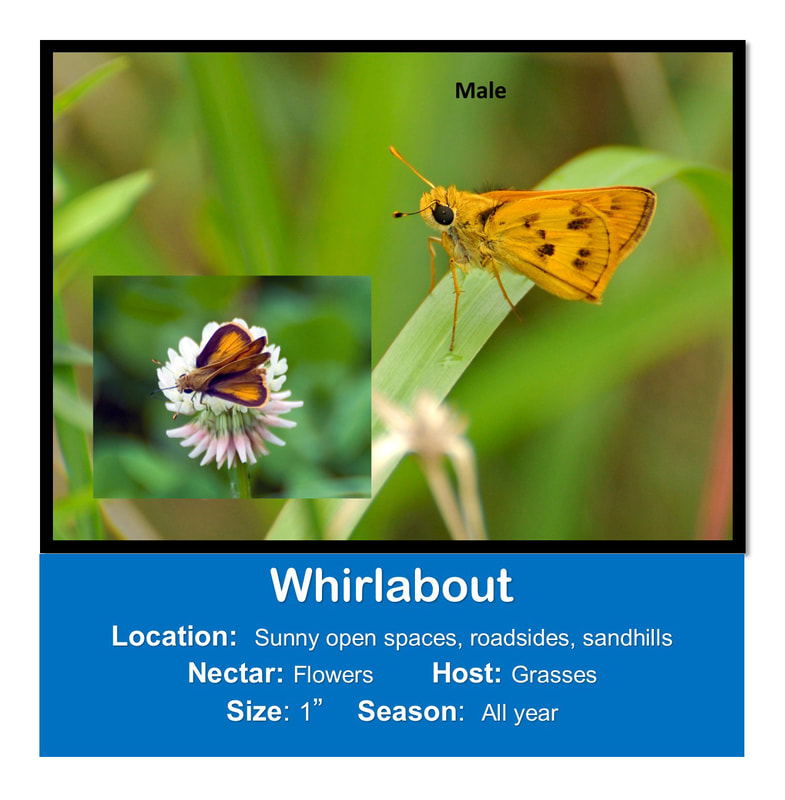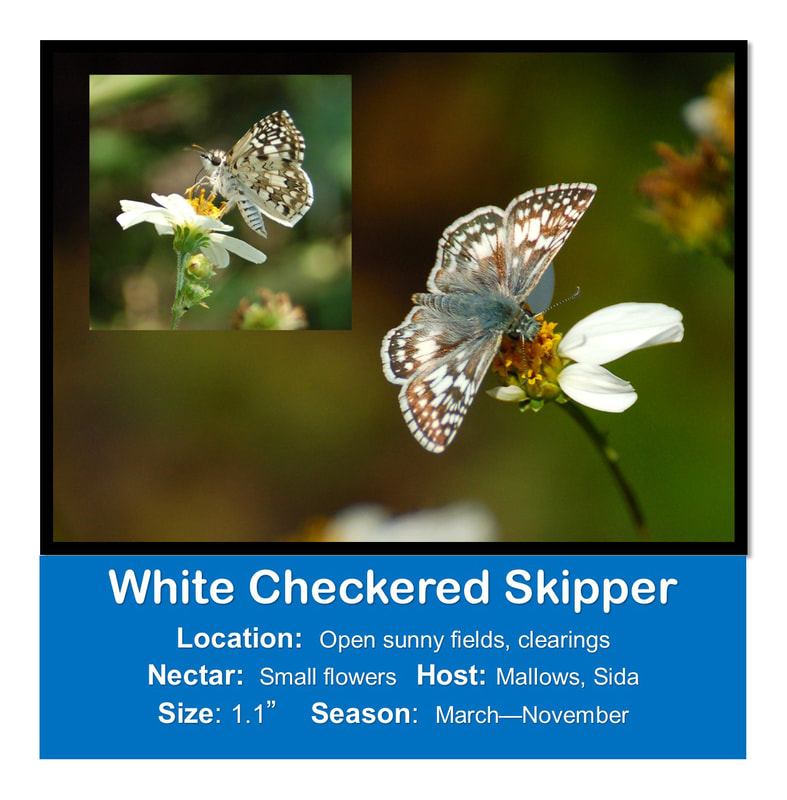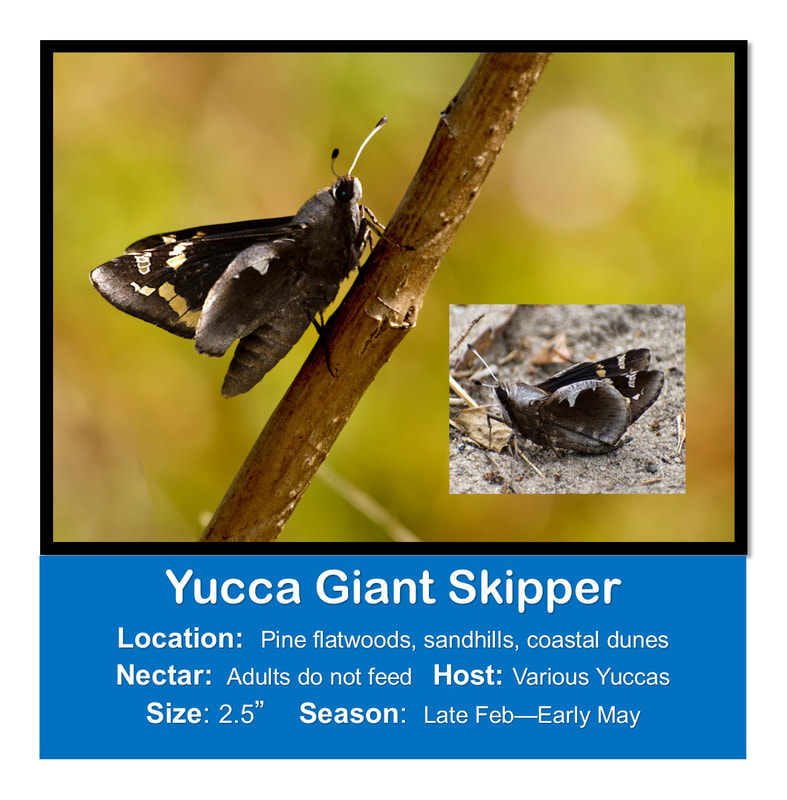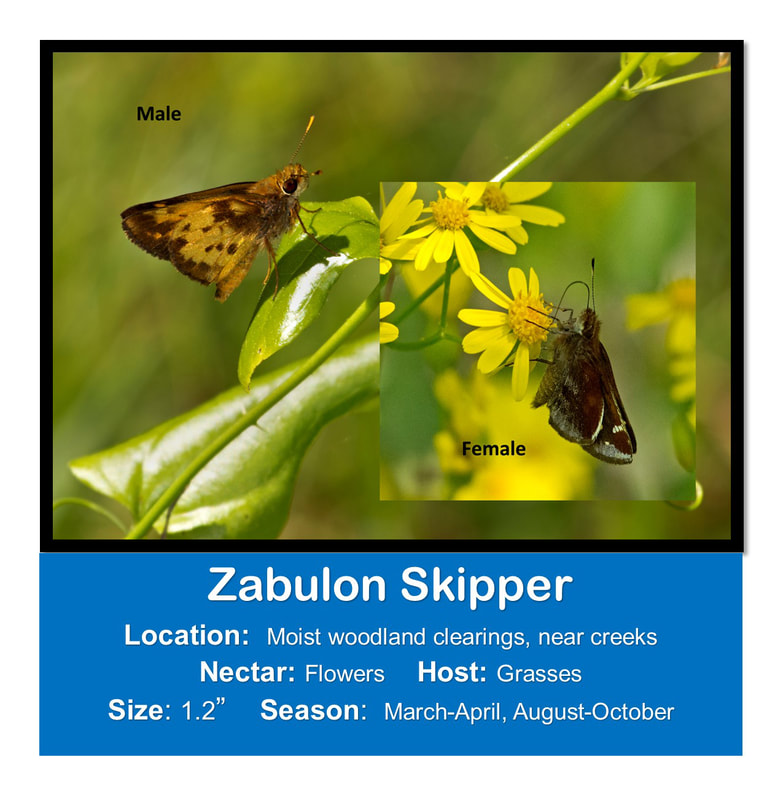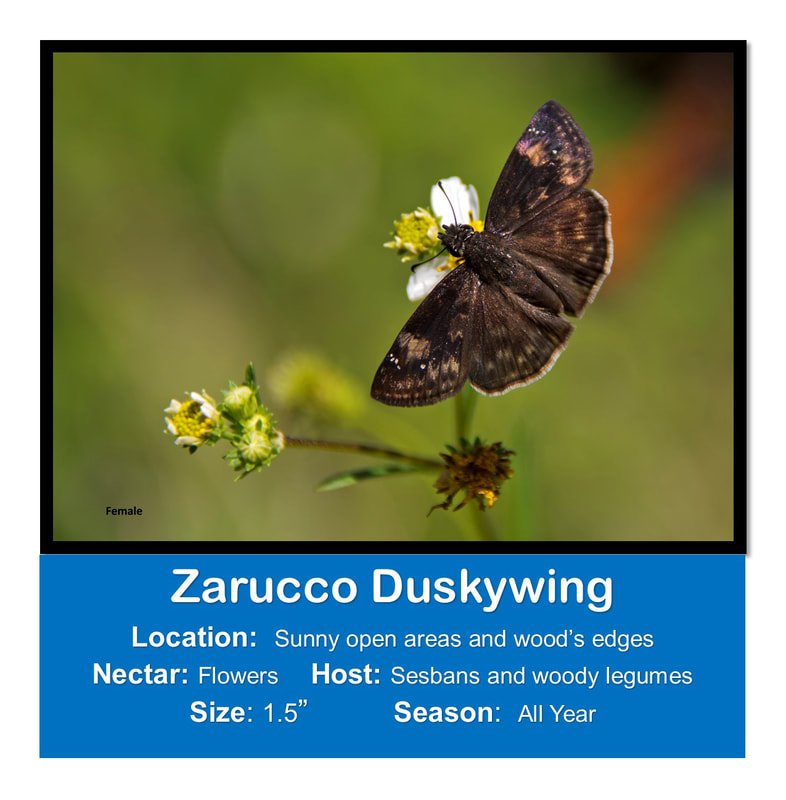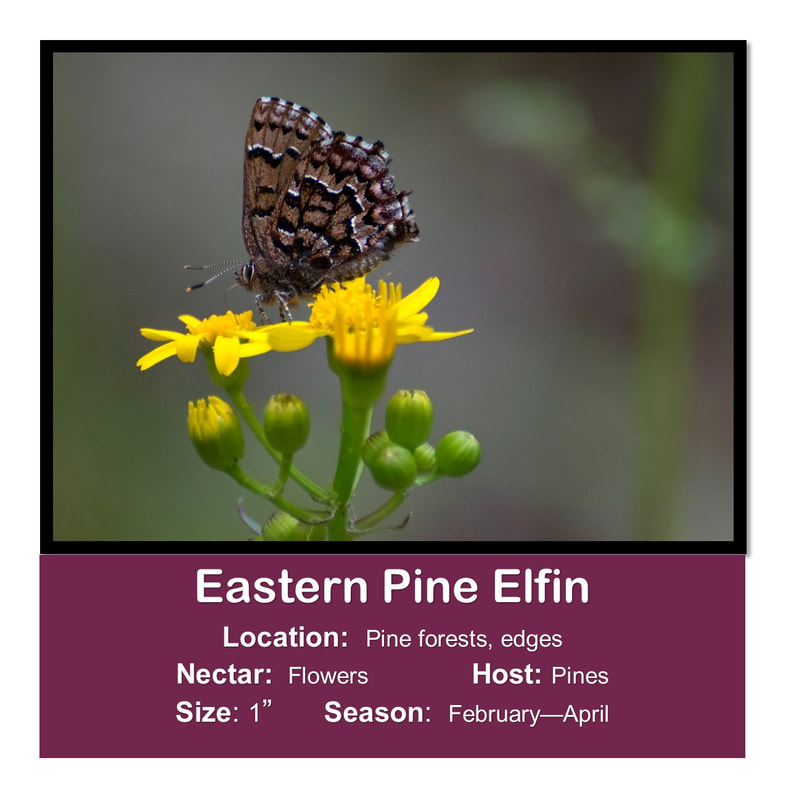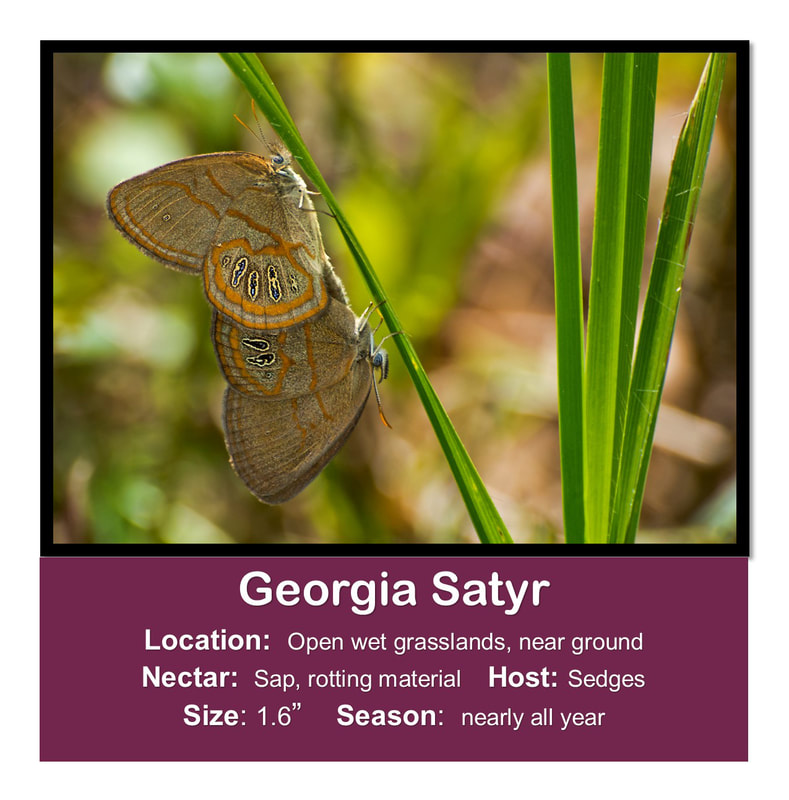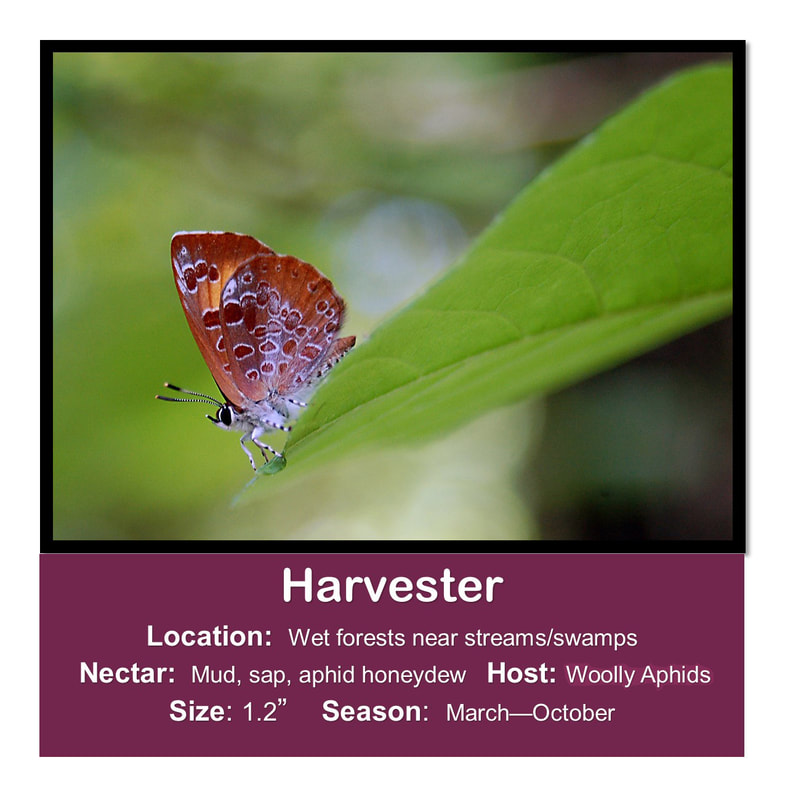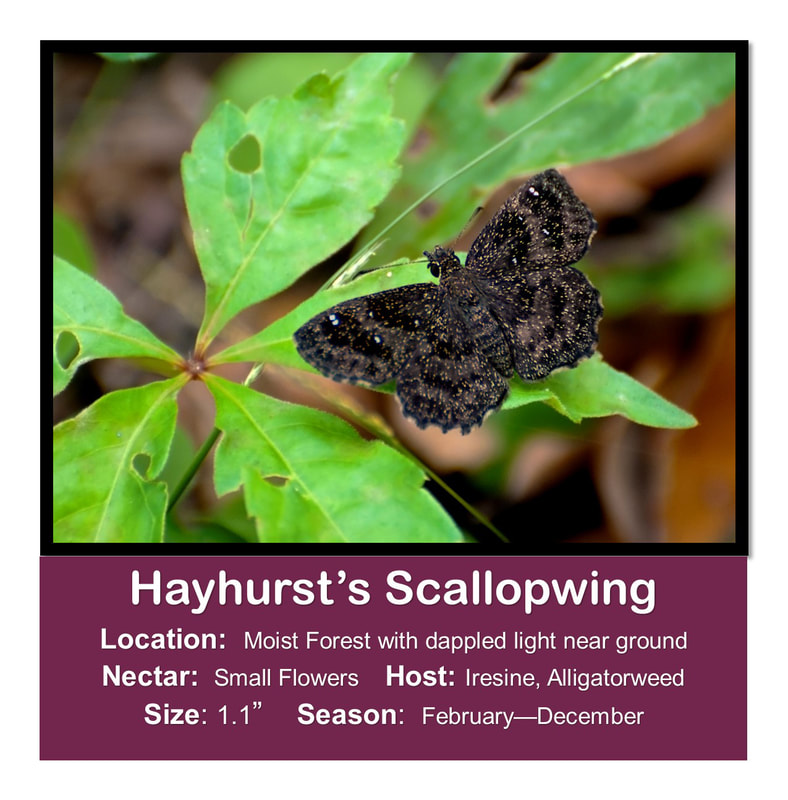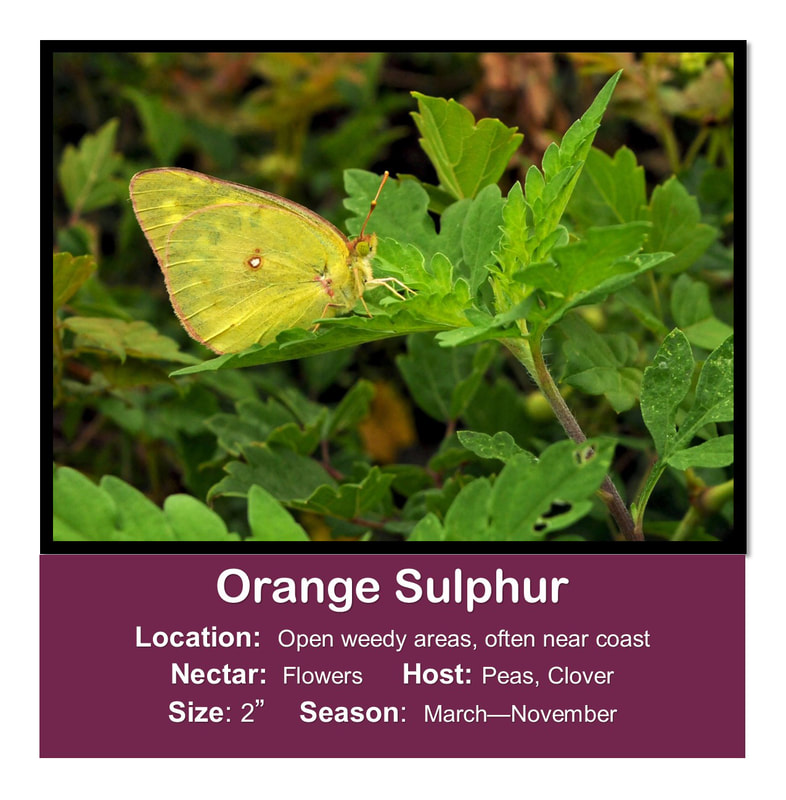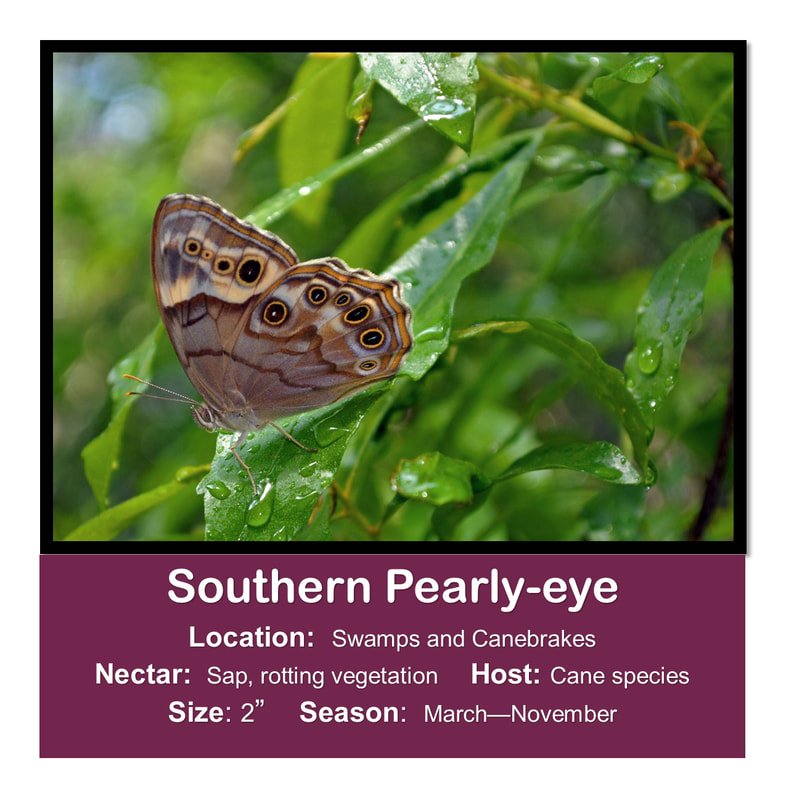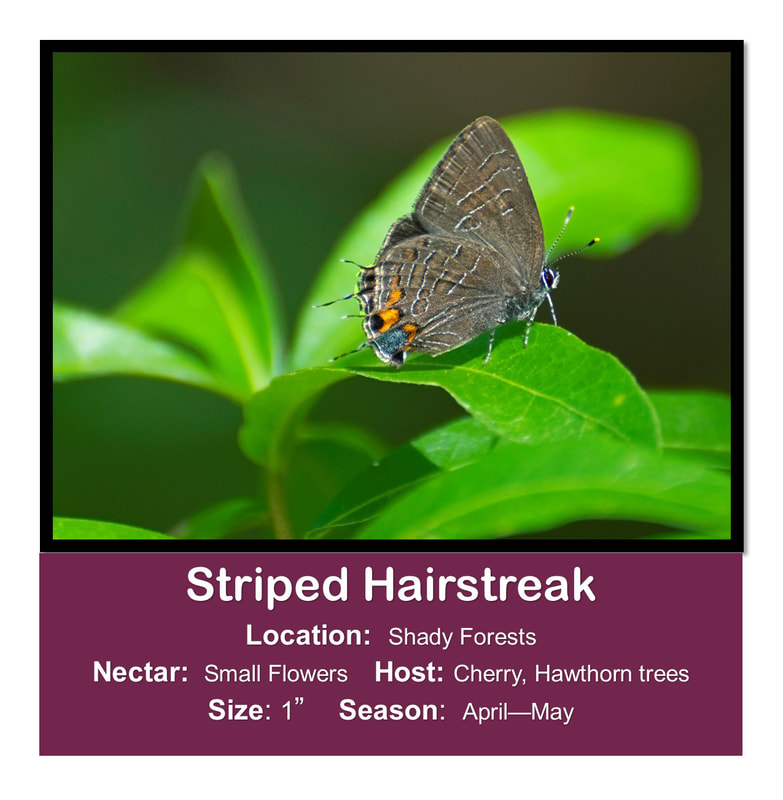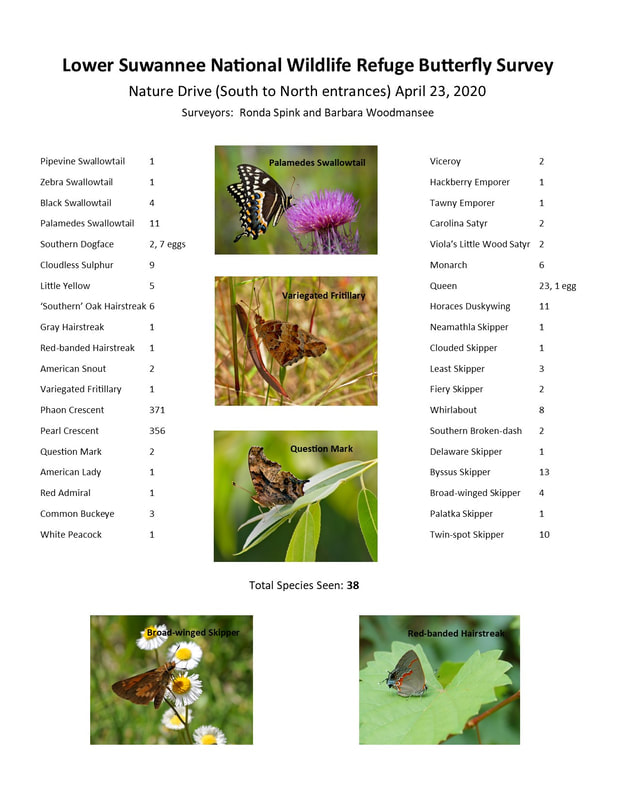Since 2009, I’ve been regularly surveying native butterflies in the Refuge. Through the years, 90 species of butterflies have been identified both north and south of the Suwannee River. There are still more to be found! My images below are designed to help identify the butterflies that have been documented in the Refuge, and I hope this encourages visitors to appreciate and support the diversity of all wildlife.
Special thanks to Entomologist, Dr. Marc Minno for his assistance with this project.
Please contact me for questions or comments at [email protected]
Barbara Woodmansee
P.S. Here are my 2020 survey results which give you an idea of how many butterflies can be found on a single day in the refuge.
Special thanks to Entomologist, Dr. Marc Minno for his assistance with this project.
Please contact me for questions or comments at [email protected]
Barbara Woodmansee
P.S. Here are my 2020 survey results which give you an idea of how many butterflies can be found on a single day in the refuge.
Hairstreaks and Elfins
Hairstreaks and Elfins are small butterflies that generally have “tails” on the ends of their hindwings. These tiny hair-like projections, often with a dark spot at their base are thought to represent a false head and antennae. Hairstreaks usually sit with wings closed, waving their hindwings in a sawing motion, moving their tails in a way that may lure a predator to the wrong end, allowing the butterfly to escape. They fly with a rapid, jerking motion, often too fast to follow, and can be found sitting on flowers, tree branches and occasionally on the ground.
Blues
We have 3 species of blues in the Refuge, all of which are tiny. Like hairstreaks, blues wave their wings in a sawing motion, but our blues lack tails. Blues will often perch with wings open when in bright sunshine, and sometimes twirl around the twig they are standing on. Their flight is erratic, and they are generally found on or very near their host plants, preferring tiny flowers for nectar.
Swallowtails
We are fortunate to have many swallowtail butterflies in the Refuge – and all can be seen on the same day if you’re lucky! Swallowtails are very large, most with a similar but distinctly different “pipe” pattern on the underside of the hindwings and generally have long slender tails and bright colors. They have soaring or gliding flight patterns, love flowers and are often very approachable.
Sulphurs and Whites
Sulphurs and white butterflies are quite common in the Refuge, favoring sunny open areas most of the time. They are rapid fliers, moving quickly from flower to flower. Many are sexually dimorphic – males and females look slightly different, and some have distinct summer and winter “forms”(white or yellow depending on the season).
Nymphalids
The Nymphalids or “Brushfoots” are the biggest and most diverse family of butterflies. Generally large and colorful butterflies, there are many species within this family. The nymphalids are long-lived butterflies, some migrate and many mimic other butterflies. This group will be divided into sub-families for ease of identification.
Satyrs
Satyrs are generally the shade-loving, moist swamp dwellers. They are attracted to dappled light and are rarely seen nectaring on flowers. Carolina and Viola’s wood satyrs are common, but the others are less often seen. Their flight is bouncy, and they generally remain near or on the ground.
MetalmarksAlthough there may be as many as 1500 metalmark species in the neotropics, our Refuge features only one–the beautiful Little Metalmark. Always near the ground, little metalmarks are generally found near their host plant, thistles. They love tiny flowers, and often sit facing the ground on slender plant stems, metallic silver lines flashing, slowly waving their tiny orange wings.
|
Skippers
Skippers are the most challenging family of butterflies to identify. Our Refuge is full of them, and they are found in every habitat within the LSNWR. With experience, their distinct markings, habits and locations make this group of butterflies an exciting group to observe. Even very experienced butterfly watchers have to put their heads together sometimes when identifying skippers.
New Sightings in 2023
Barbara and her team have been hard at work surveying butterflies and verified 4 more species on the Refuge!
Ready for a Challenge?
The species below have not been documented in the Refuge...yet! All of them have been seen nearby, and our Refuge contains habitat that should support them. If you see one or more, please take a photograph and let us know.
